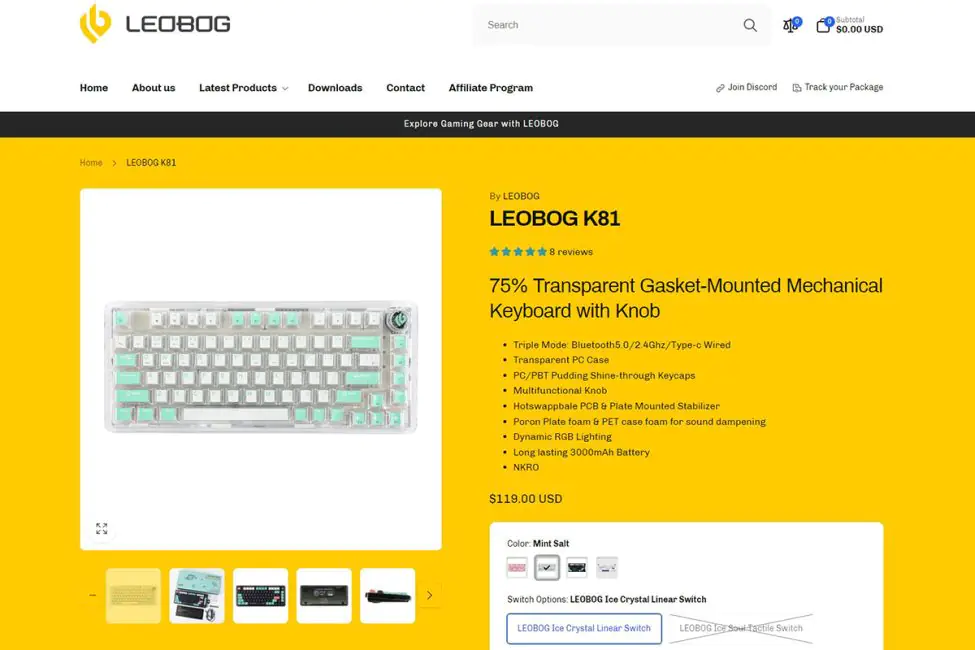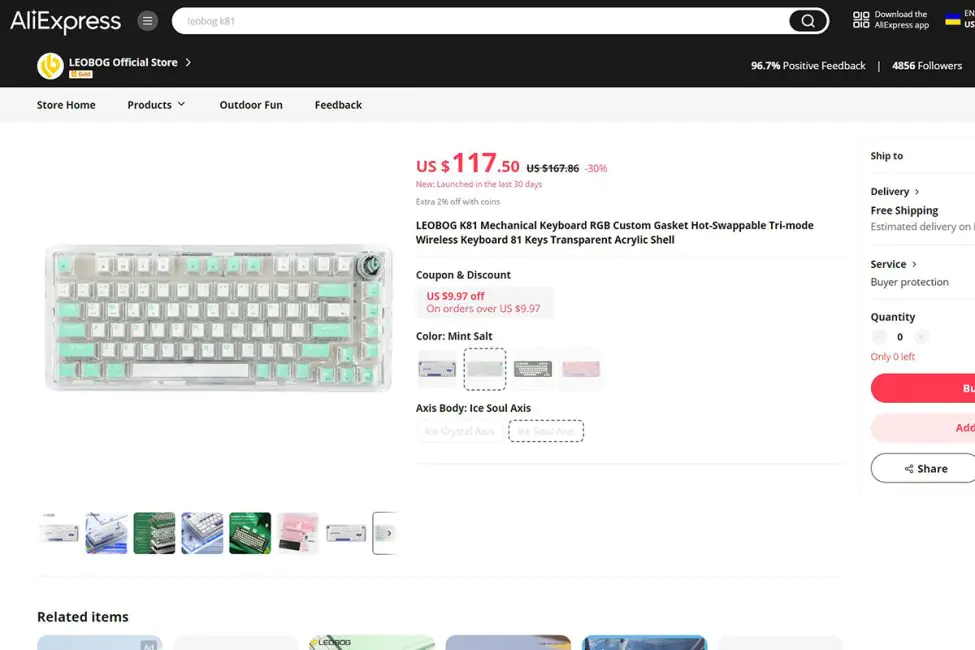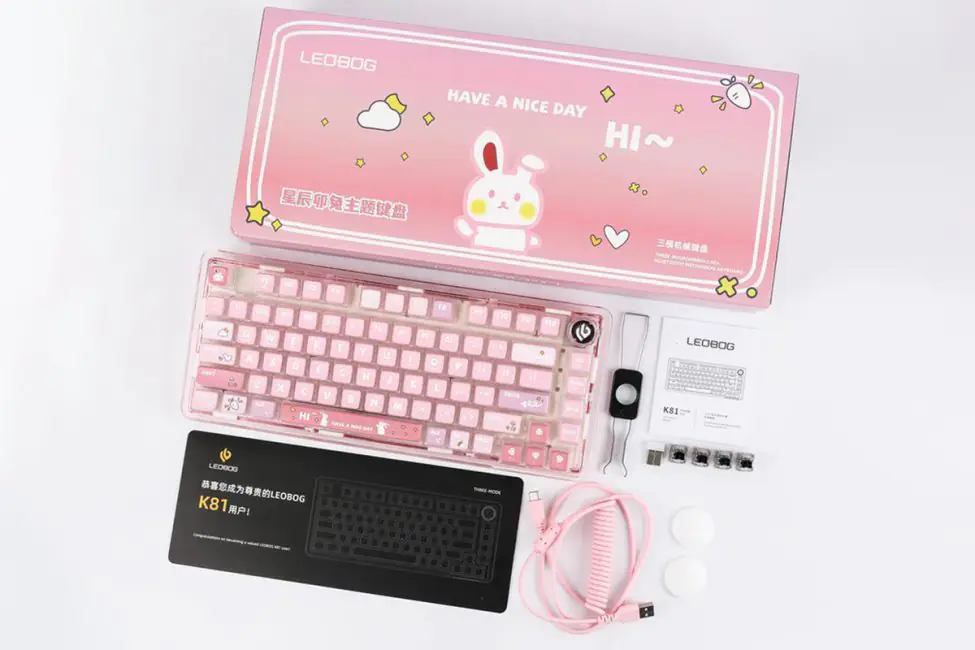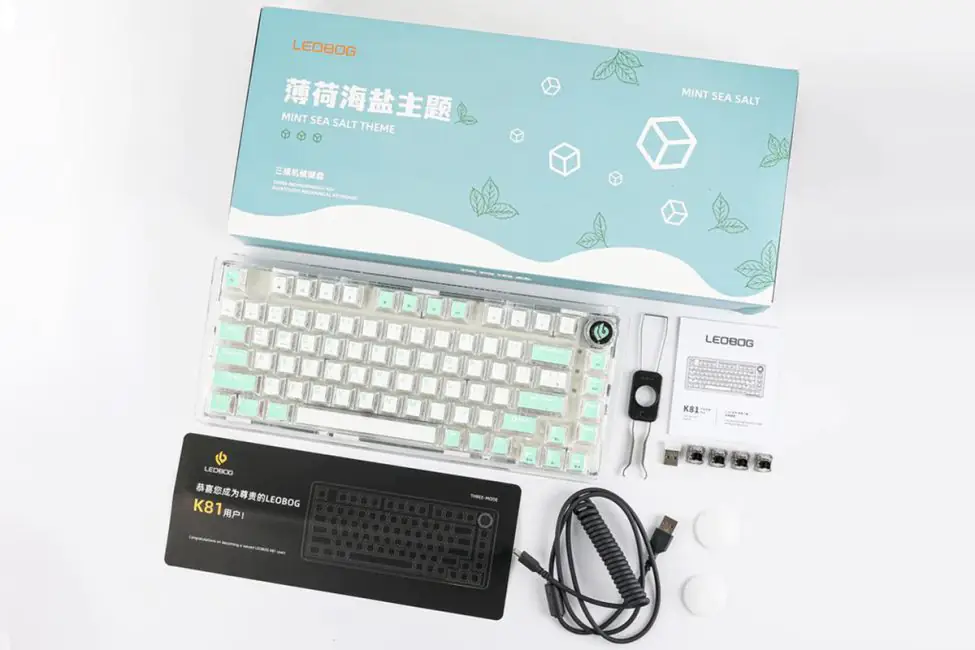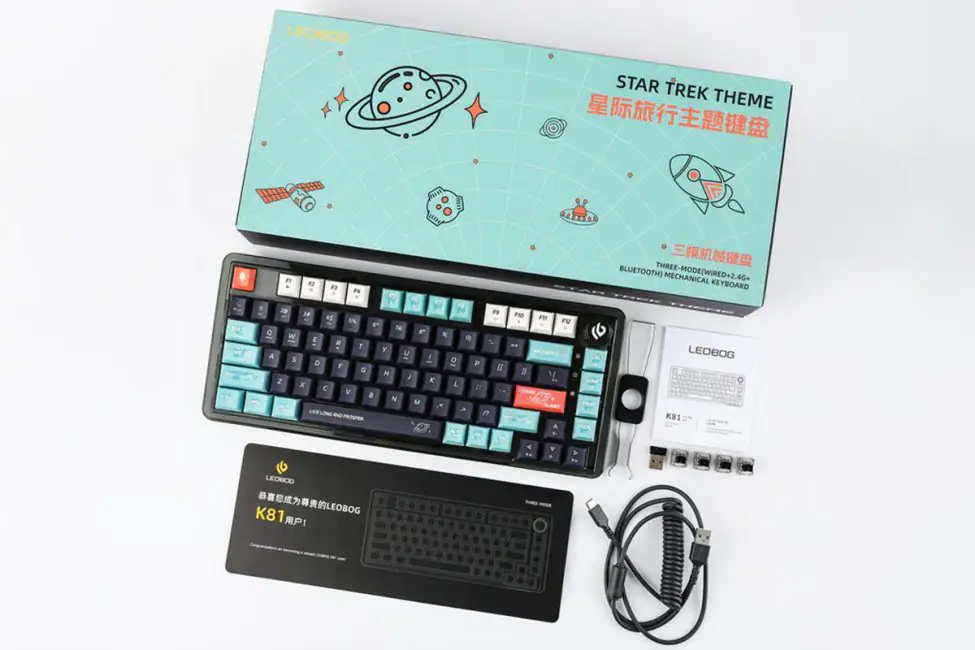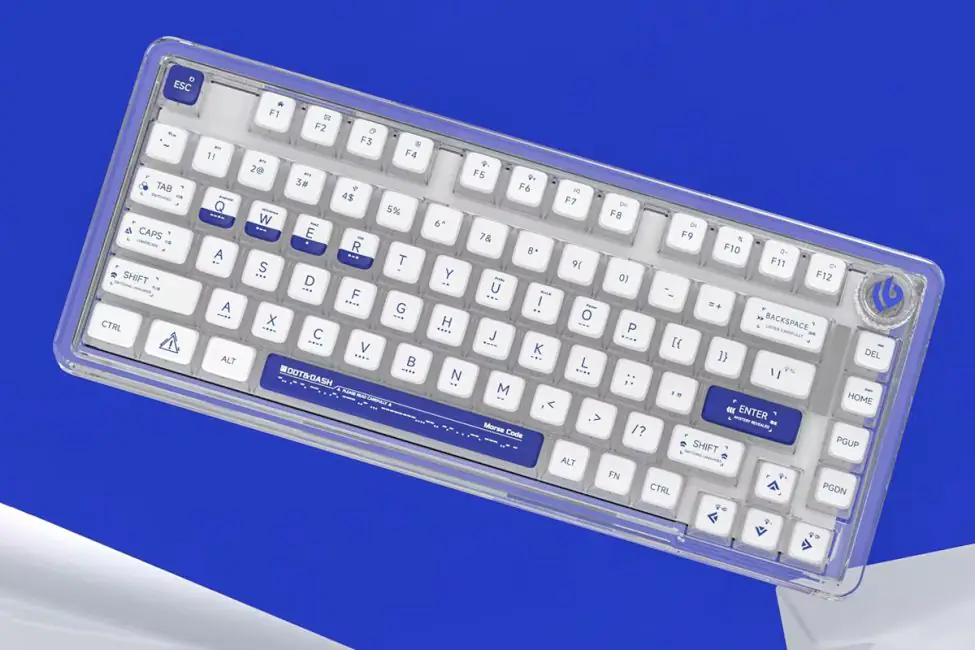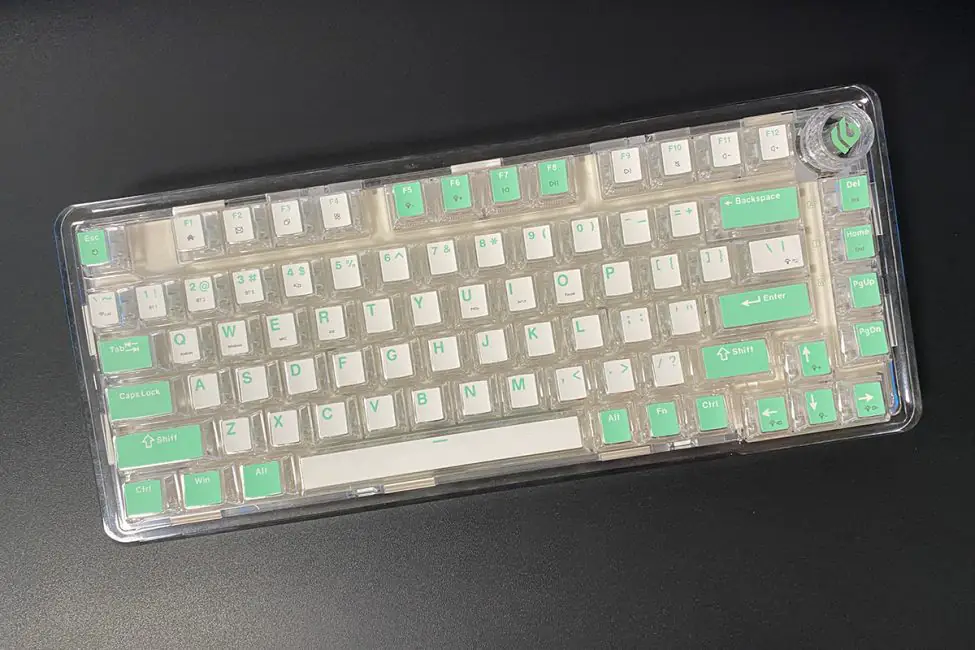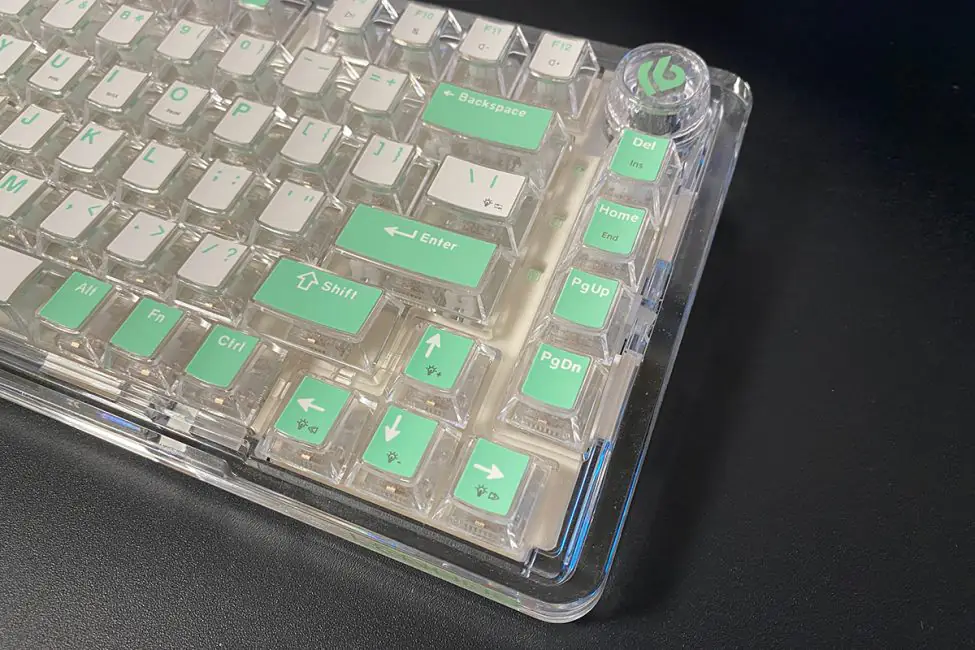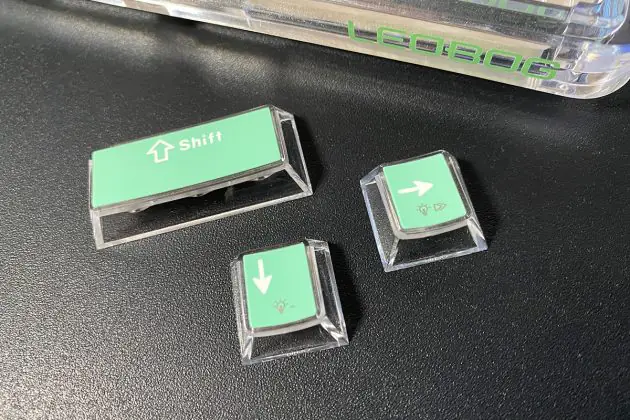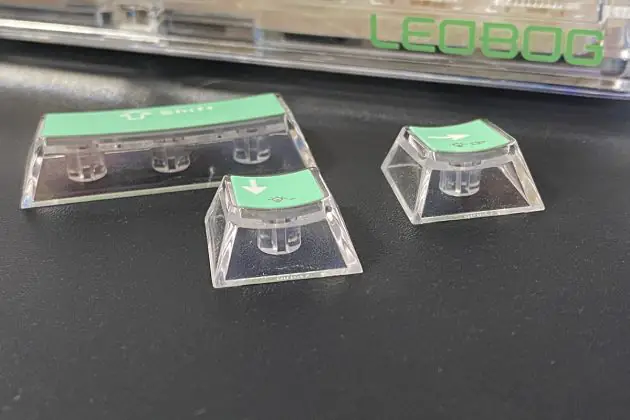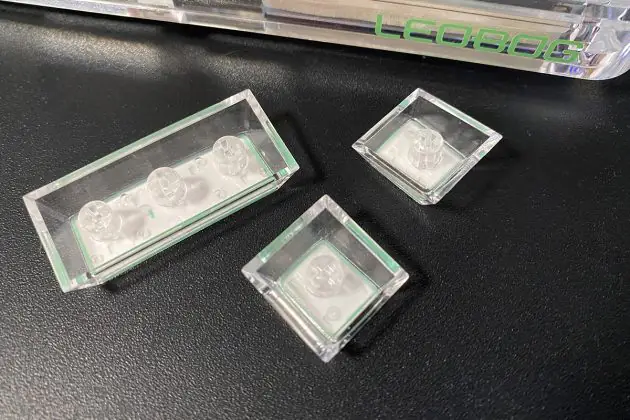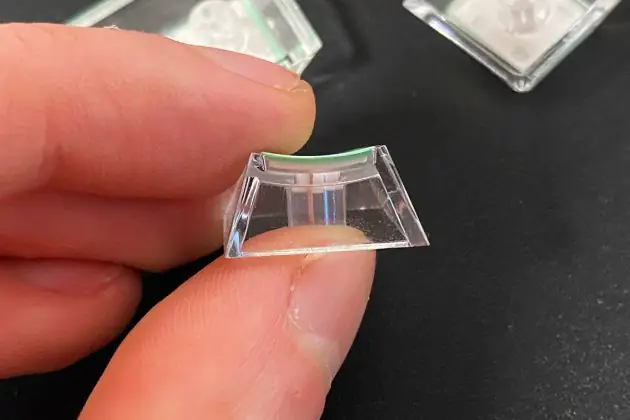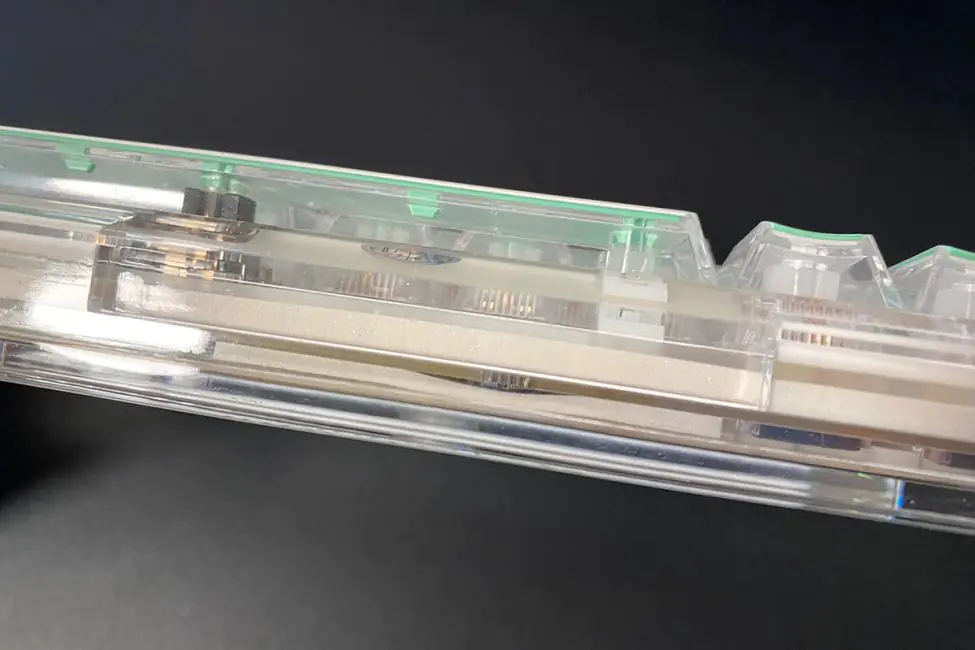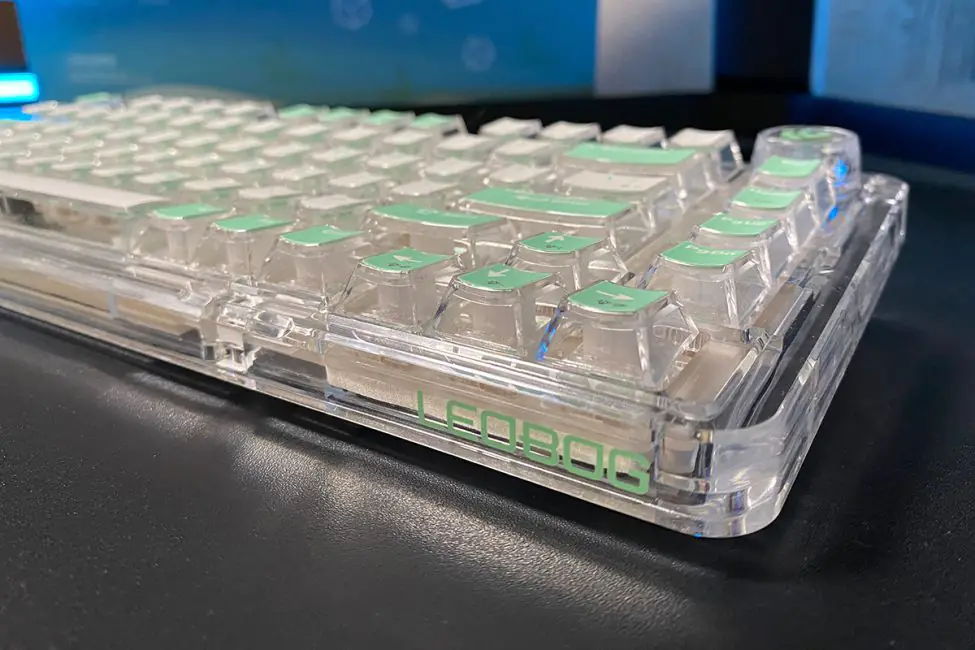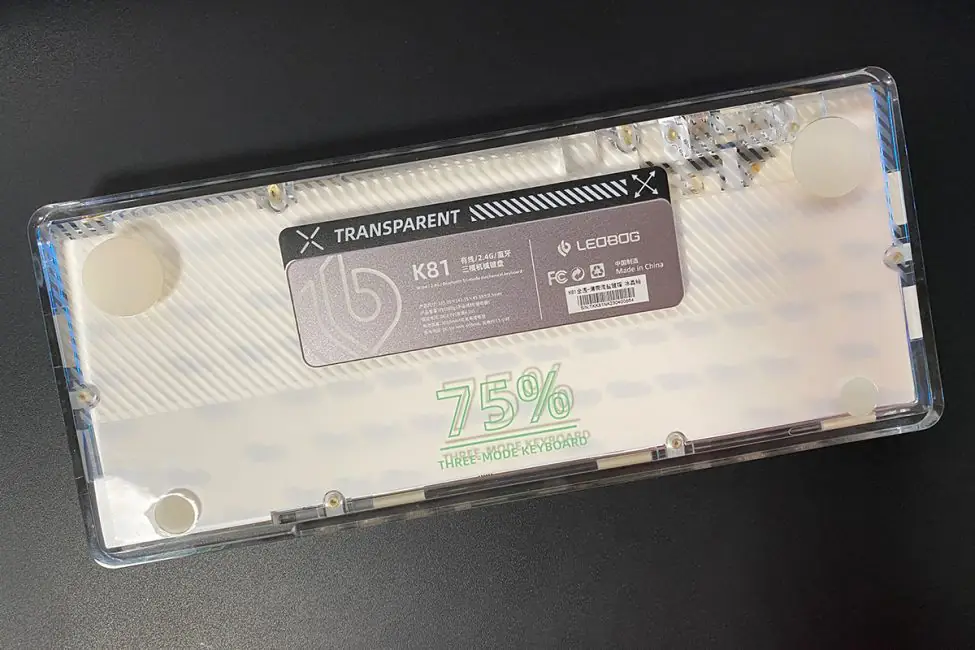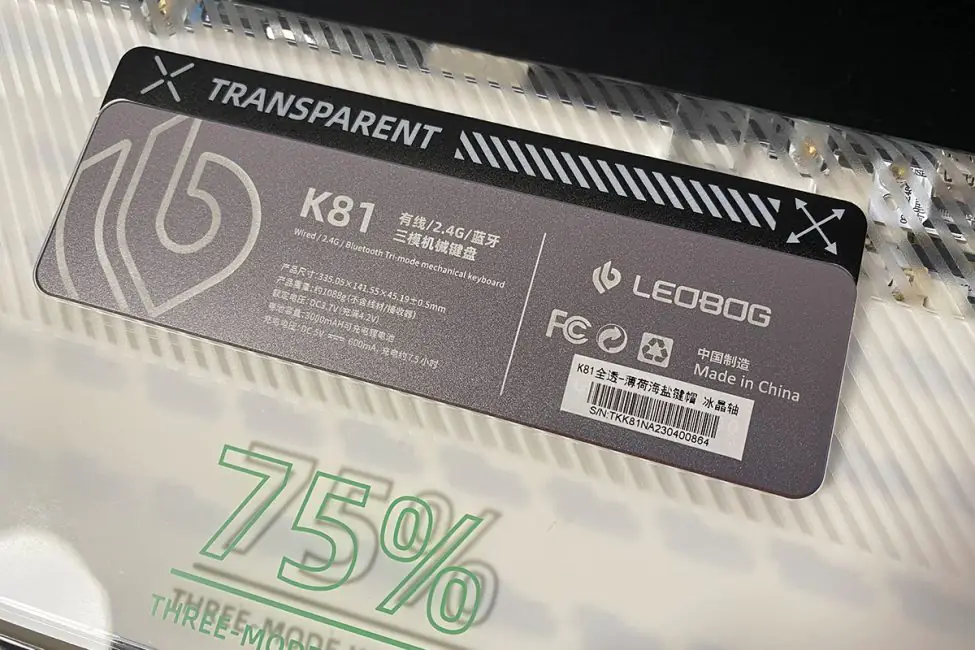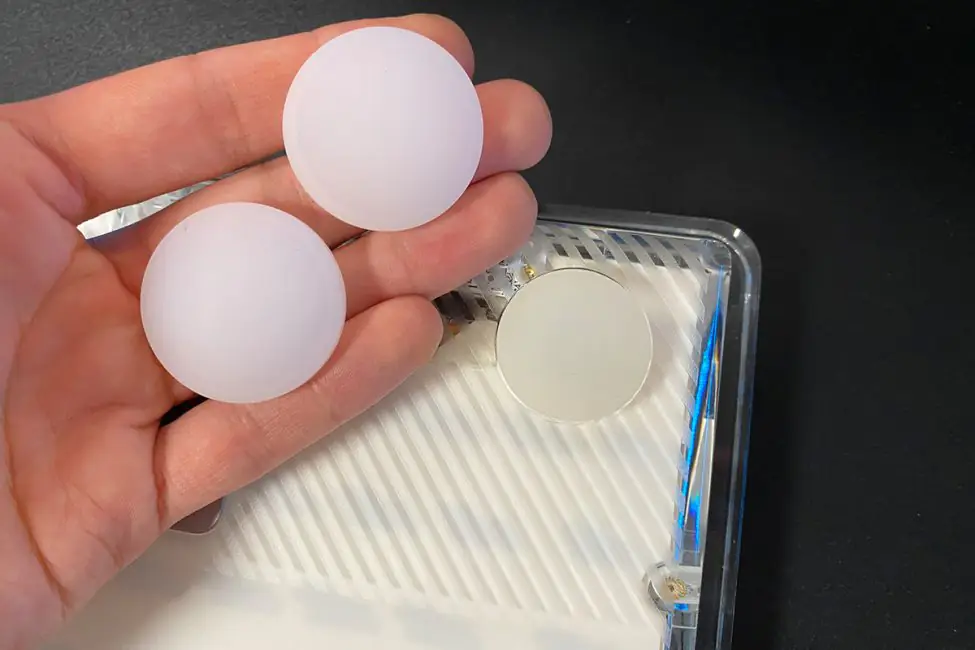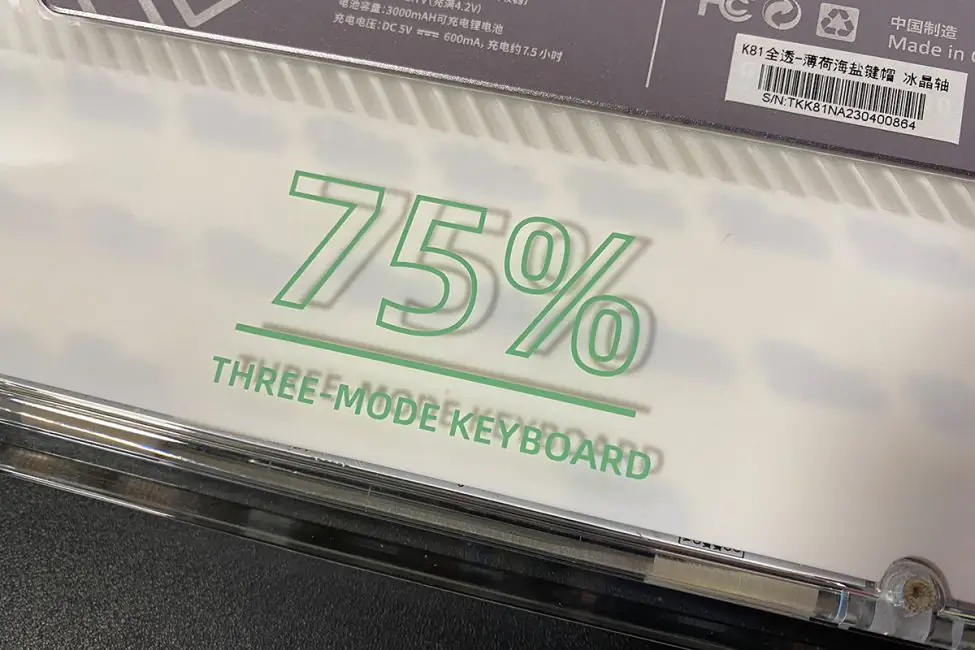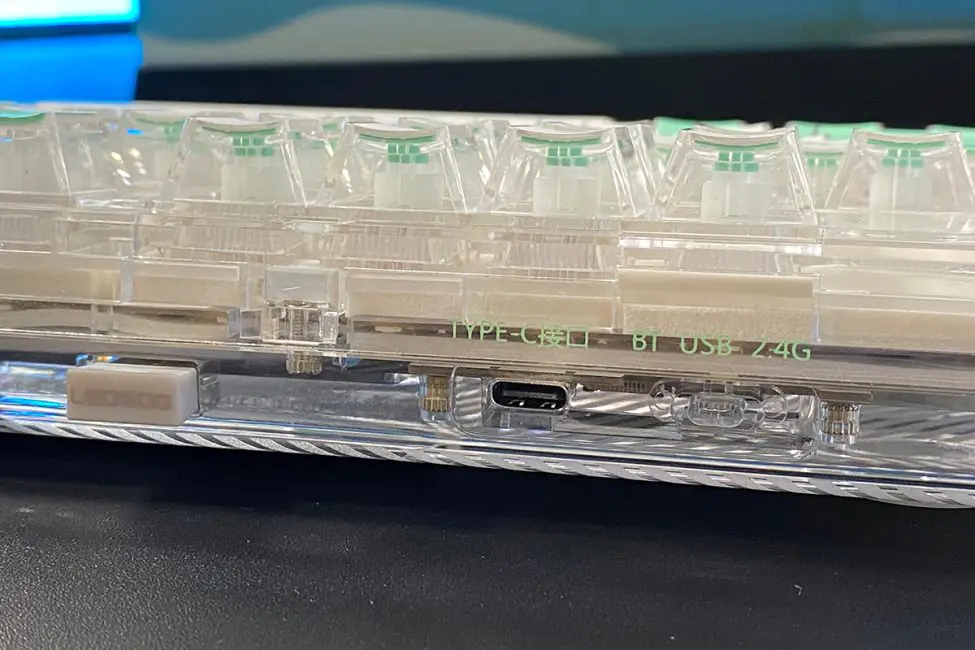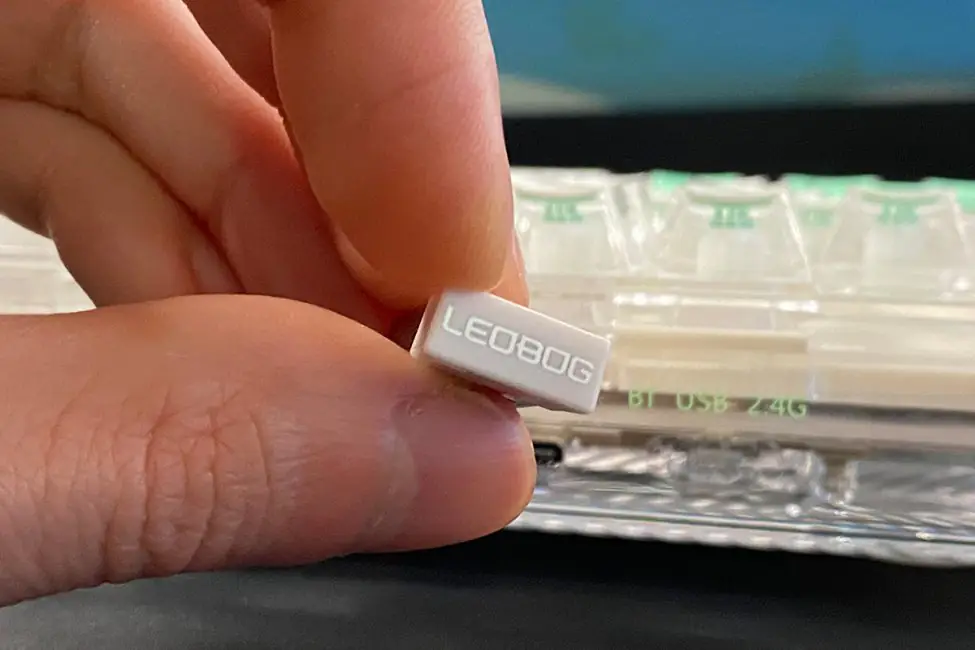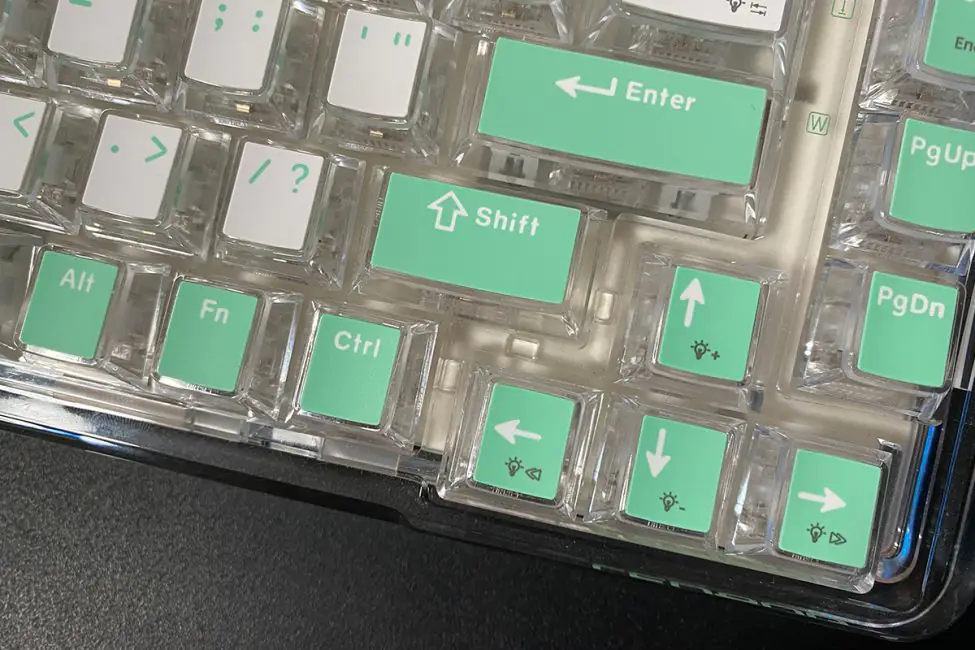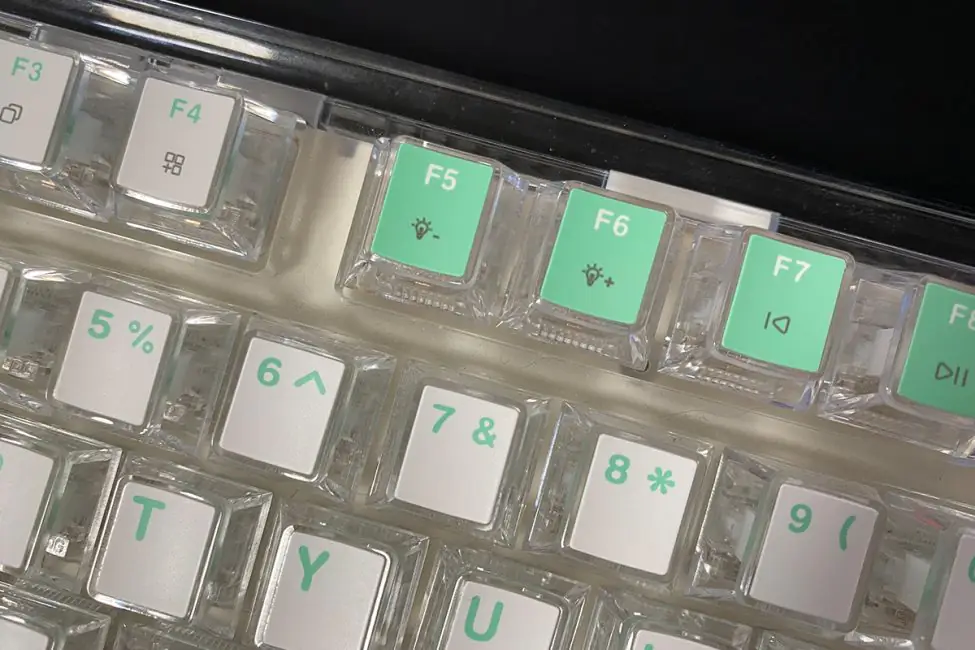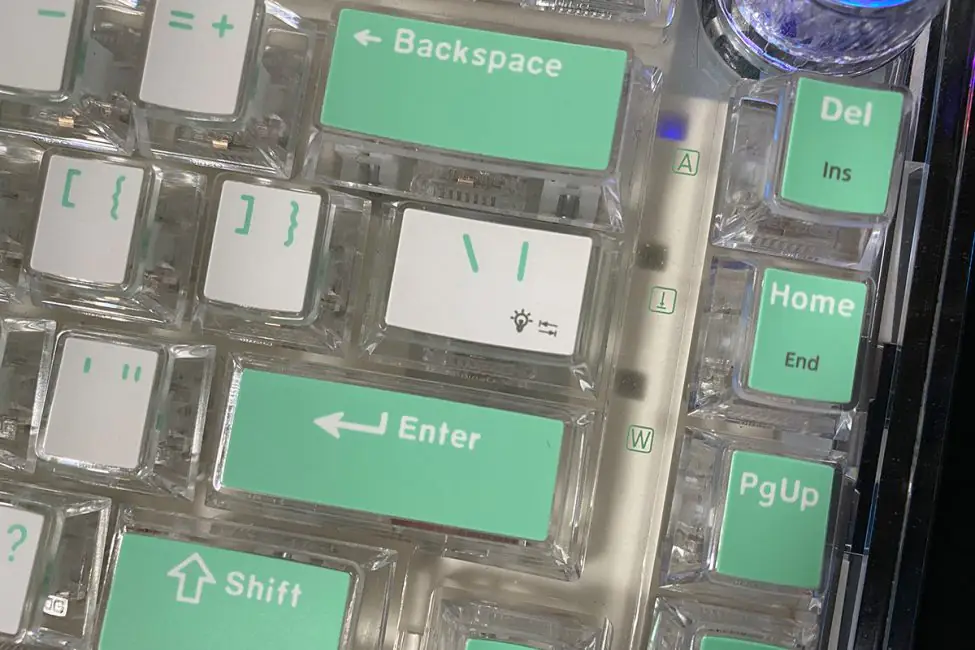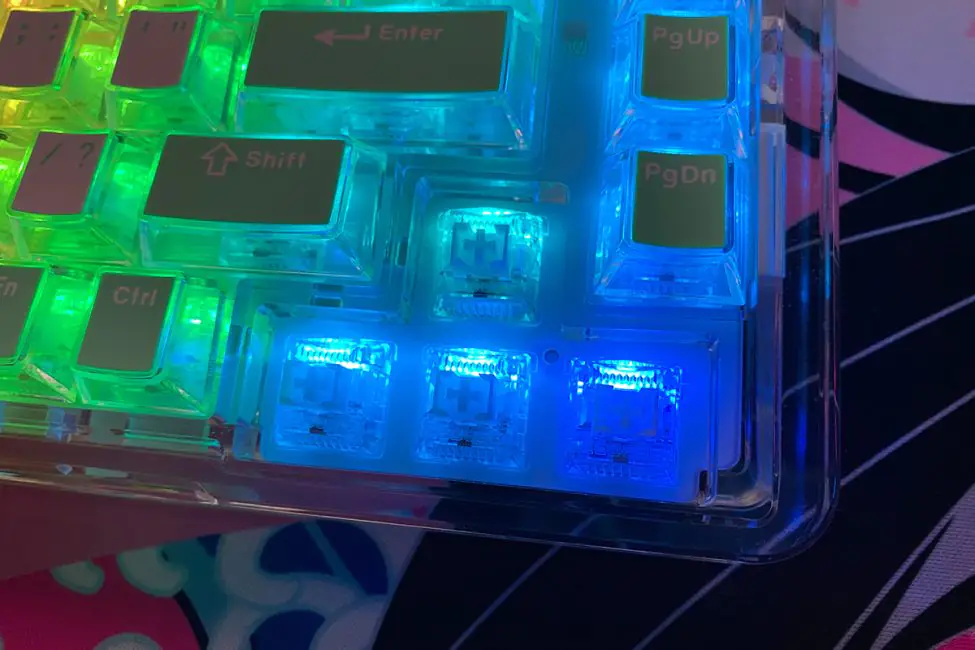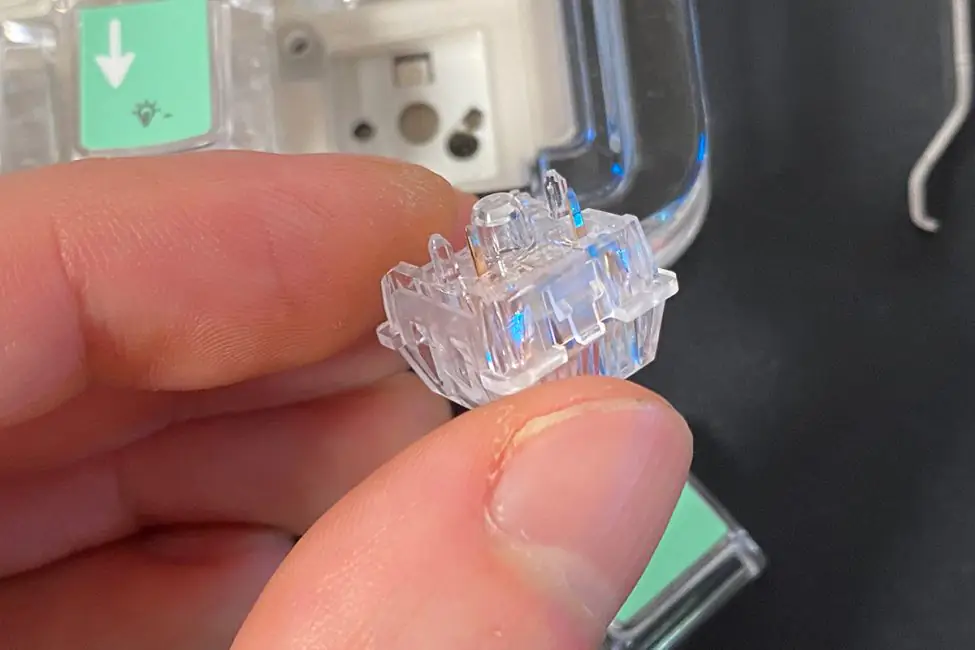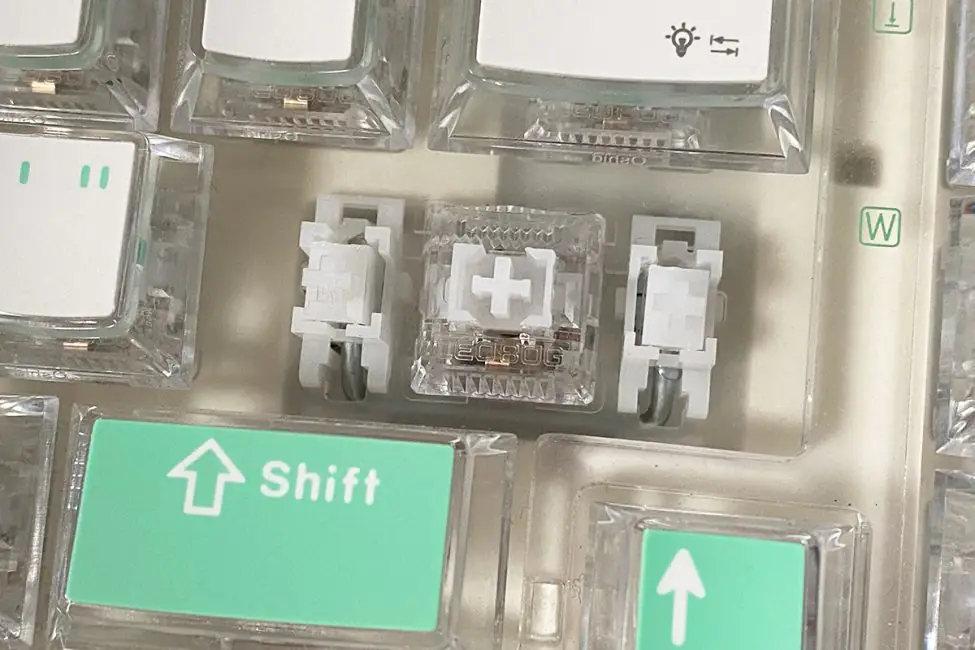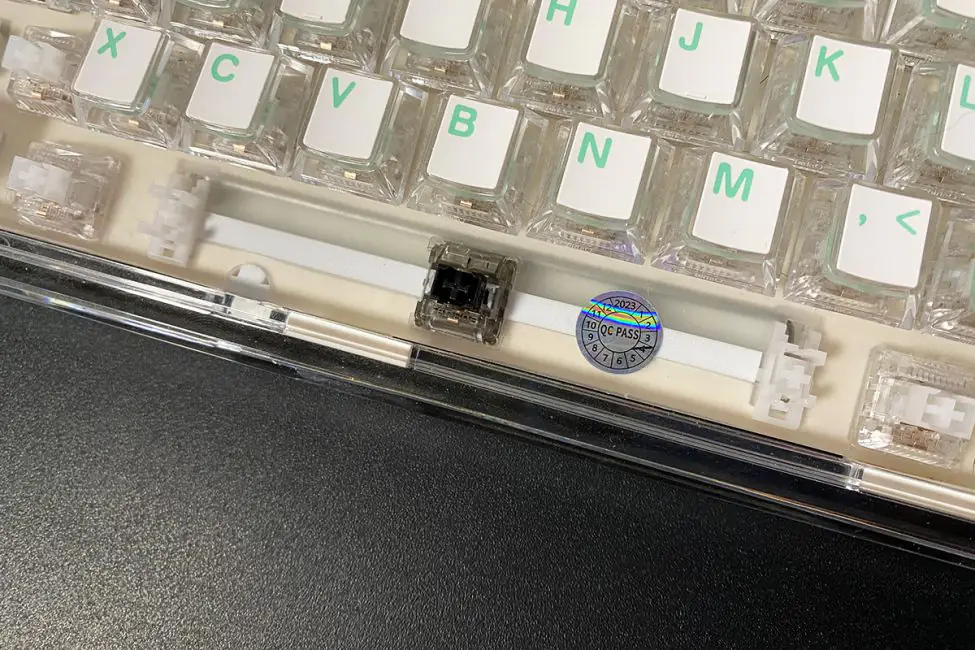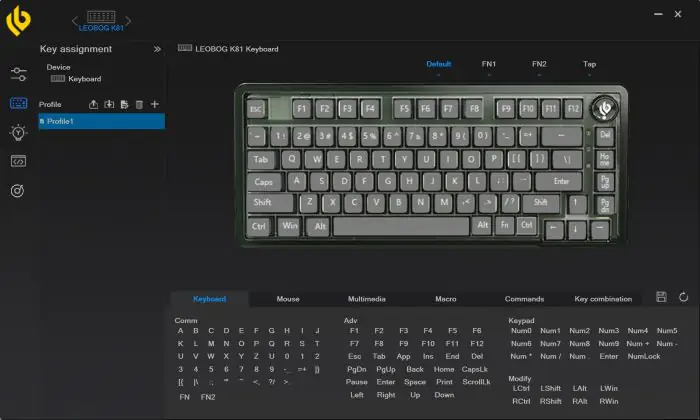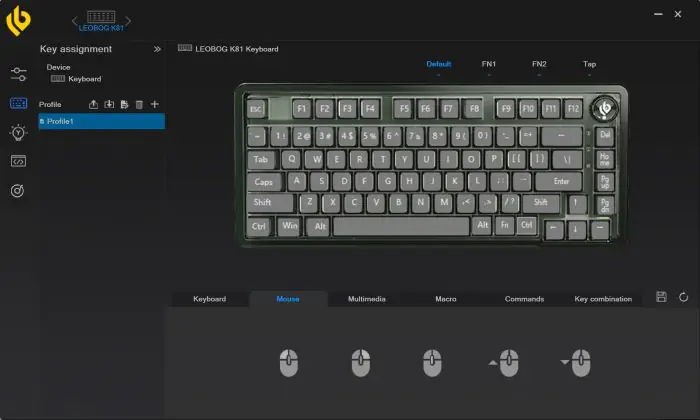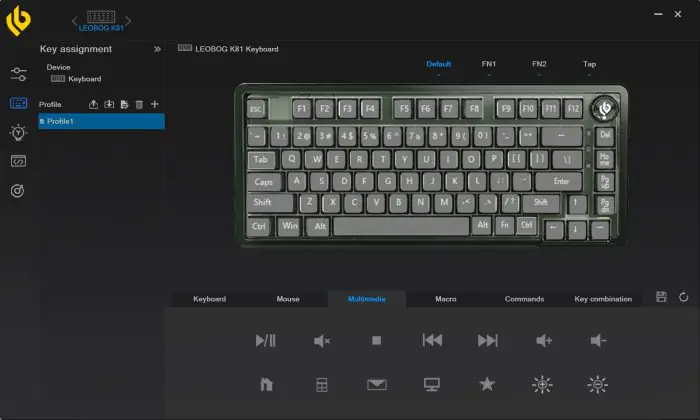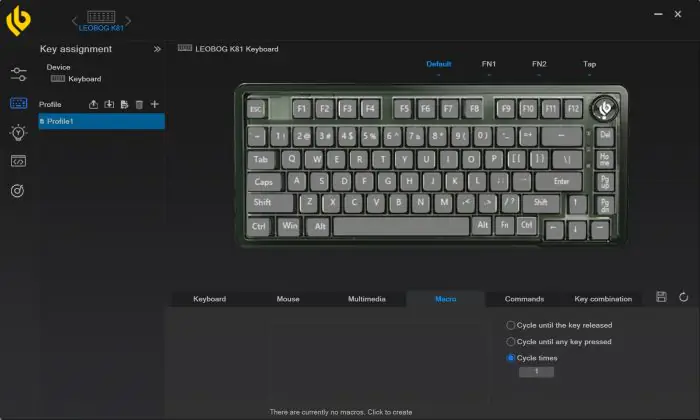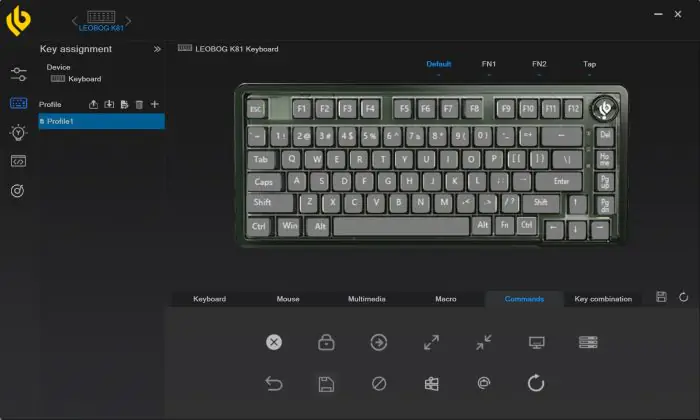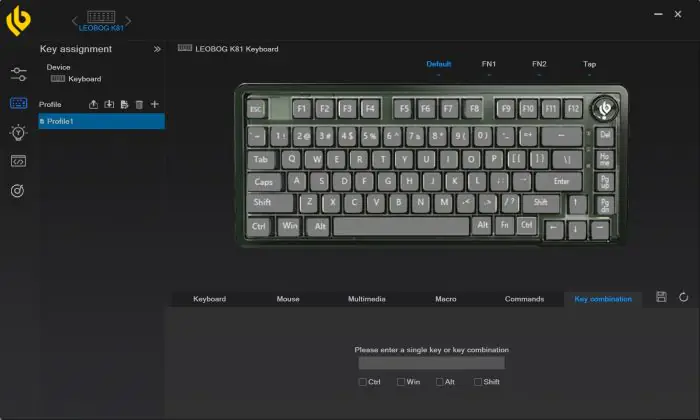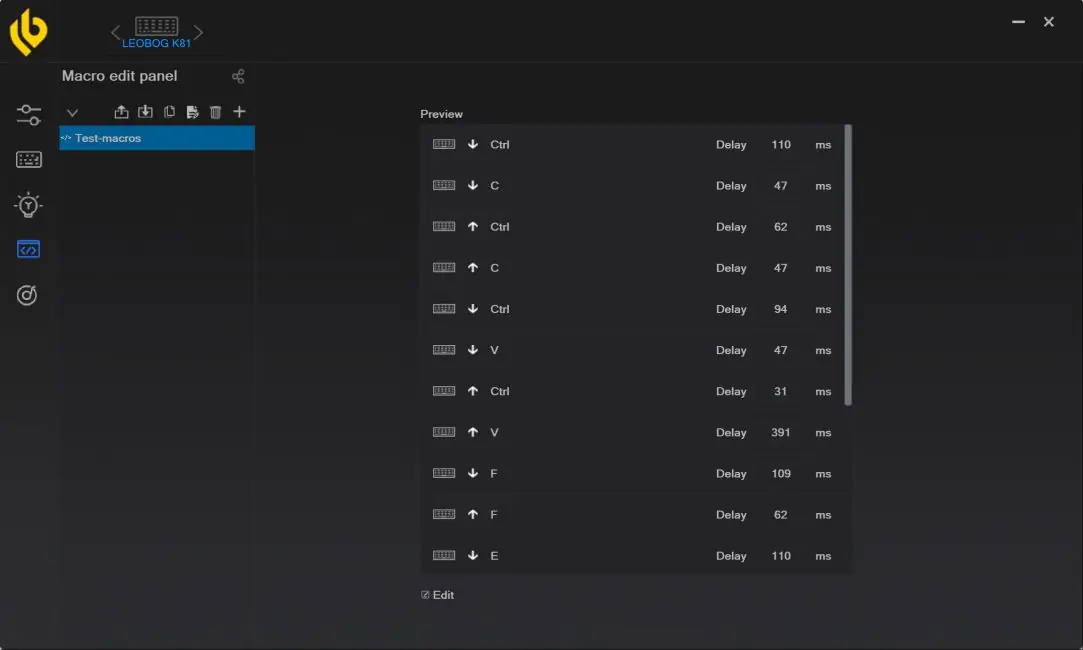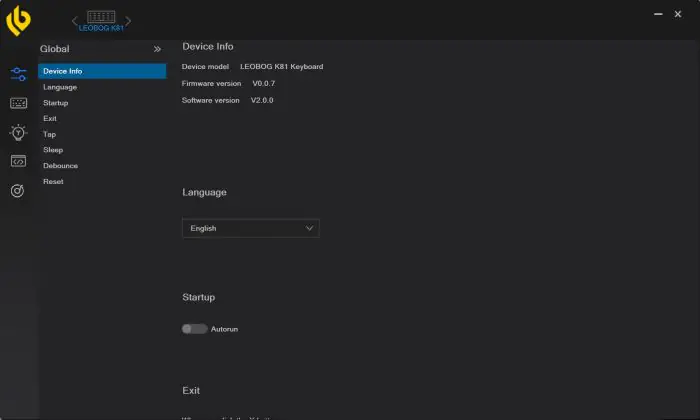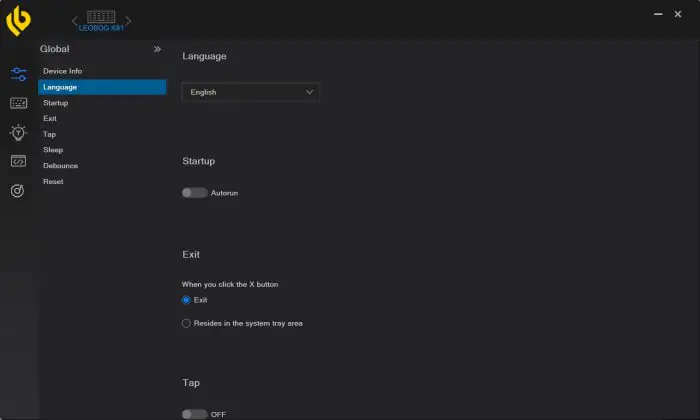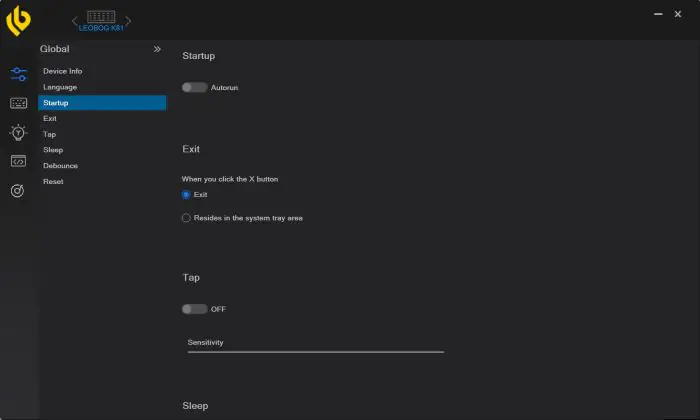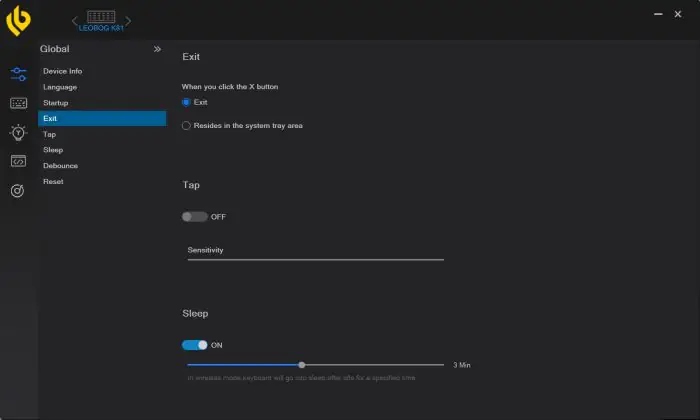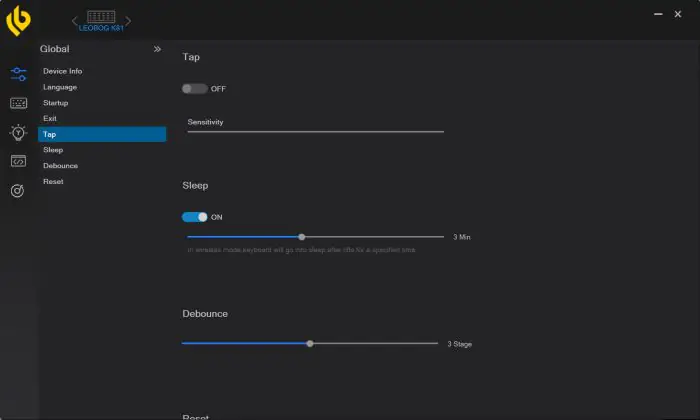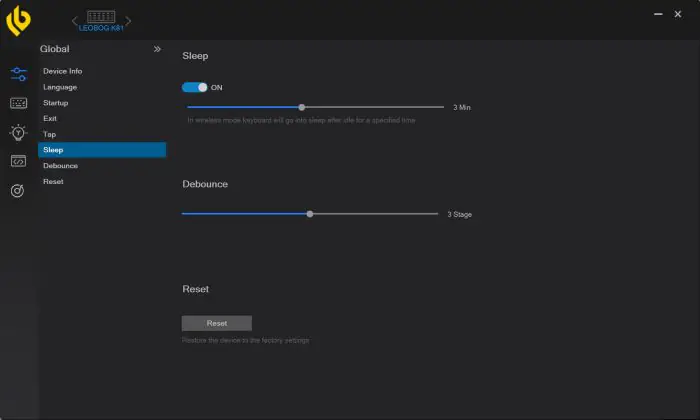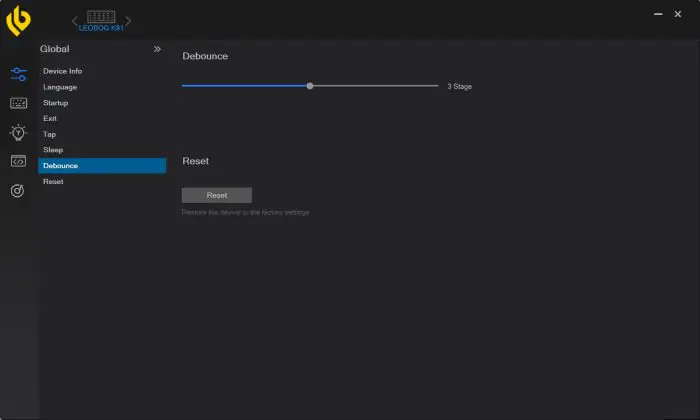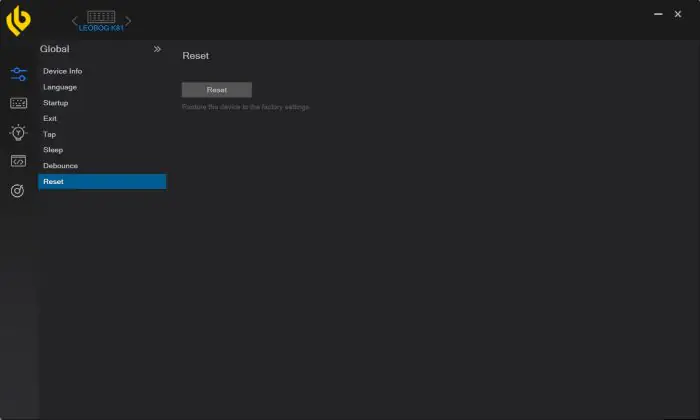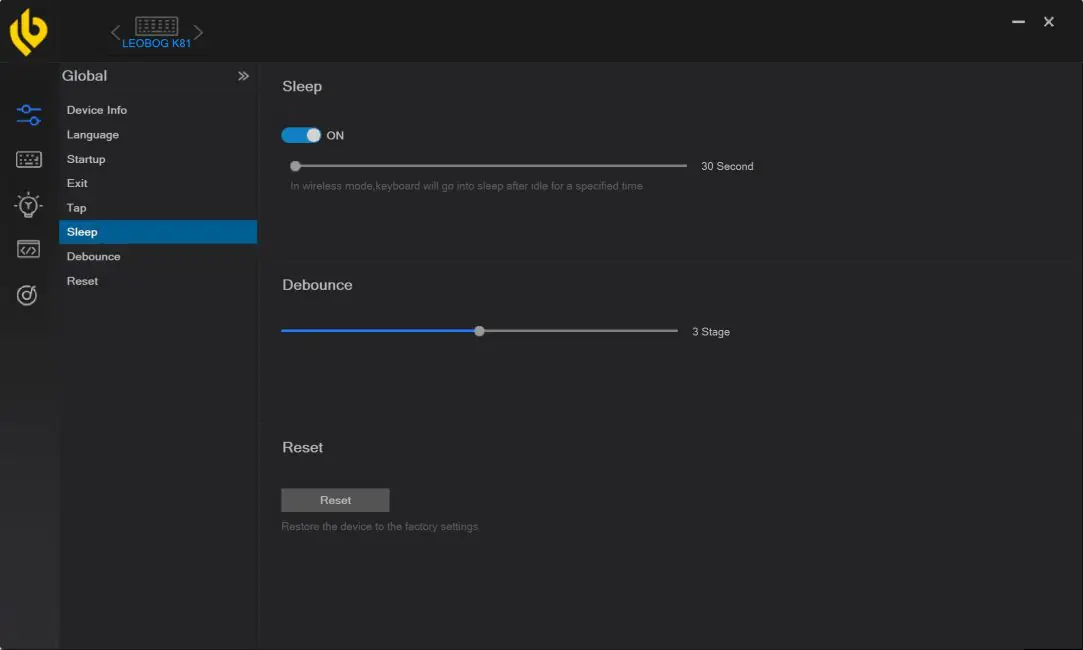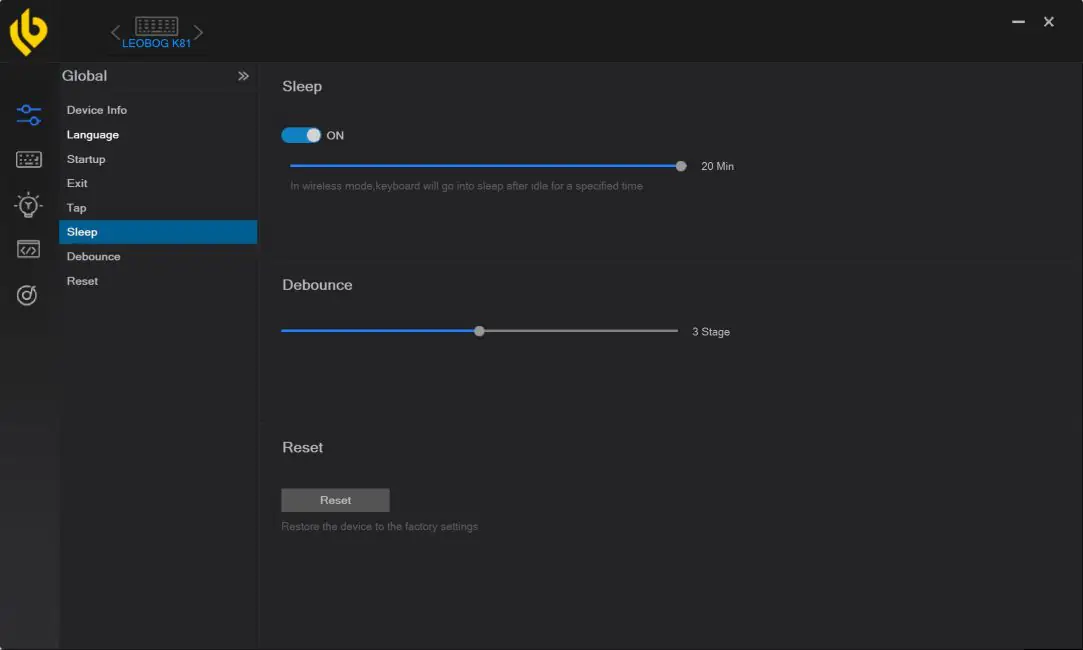© ROOT-NATION.com - Use of content is permitted with a backlink.
Today, I’m reviewing the LEOBOG K81 keyboard. It’s an unusual wireless mechanical keyboard from the relatively unknown but quite ambitious Chinese brand LEOBOG. The device costs only $119. For this price, it offers quality assembly, a unique design, 3 connection modes, simultaneous support for multiple Bluetooth devices, pre-lubricated switches and stabilizers, hot-swappable functionality, thoughtful noise isolation, and more. After getting acquainted, the keyboard left a good impression. In principle, I can already say that in terms of quality, the LEOBOG K81 can be compared to devices from well-known brands like Varmilo or Leopold. Without further ado, let’s move on directly to the review, where I’ll talk about all the features, advantages, and disadvantages of this device. As usual, let’s start with the brief technical specifications.
Technical specifications
- Model: LEOBOG K81 Mint Salt
Format: 75%
Number of keys: 81 keys
Connection: wireless (Bluetooth / RF 2.4 GHz); wired (USB) - Switches: LEOBOG Ice Crystal Linear Switch; LEOBOG Ice Soul Tactile Switch
- LEOBOG Ice Crystal Linear Switch:linear; operating pressing force 35±3 gs; full pressing force 48±3 gs; travel to actuation 1.8±0.3 mm; full key travel 3.7±0.3 mm
- LEOBOG Ice Soul Tactile Switch: tactile; operating pressing force 30±3 gs; full pressing force 45±3 gs; travel to actuation 1.7±0.3 mm; full key travel 3.6±0.3 mm; declared lifetime 60 million keystrokes
- Anti-Ghosting: yes
- #KRO: N-KRO
- Keycaps: PC/PBT Pudding
- Backlighting: RGB
- Battery: 3000 mAh
- Proprietary software: yes
- Supported platforms: Windows, MAC, Android, iOS
- Dimensions: 33.5×14.2×4.5 cm
- Weight: 1.1 kg
- Cable length: 1 m
- Additional features: greased switches and stabilizers; hotswap; multifunctional wheel; noise isolation pad; simultaneous connection of several Bluetooth devices, built-in memory
- Package contents: keyboard, 2.4 GHz RF adapter, USB-A to USB-C cable, 2-in-1 puller for keycaps and switches, blister dust cover for keyboard, 4 Ink Crystal Tactile Switch V3 switches, 2 spare bottom pads, user manual

Positioning and price
Based on the information on the official website and social media posts, I can assume that the brand has recently entered the market. Currently, LEOBOG only produces keyboards and accessories for them. They position their products as quality, practical, and affordable devices for gamers. In addition to everything mentioned above, they also offer a unique design and flexible customization options. Among LEOBOG products, you can find not only ready-made keyboards with hot-swappable switches but also DIY kits for custom builds. Considering the overall positioning and the devices offered at the moment, as well as personally getting acquainted with one of them, I can say that this brand seems quite promising to me, and it will be interesting to observe its development in the future.
As for the price of the LEOBOG K81, it is quite affordable for a keyboard of this level. On the official website, the model costs $119. On AliExpress, it can be purchased a bit cheaper, for $117. The K81 model comes in 4 versions: Pink Bunny, Mint Salt, Star Travel, and Morse Code. The versions differ only in design.
There’s also a base model based on the K81 for custom builds – the LEOBOG K81 PRO. It costs $99 on the official website. Essentially, it’s the same keyboard but without switches and keycaps – you choose and purchase them separately.
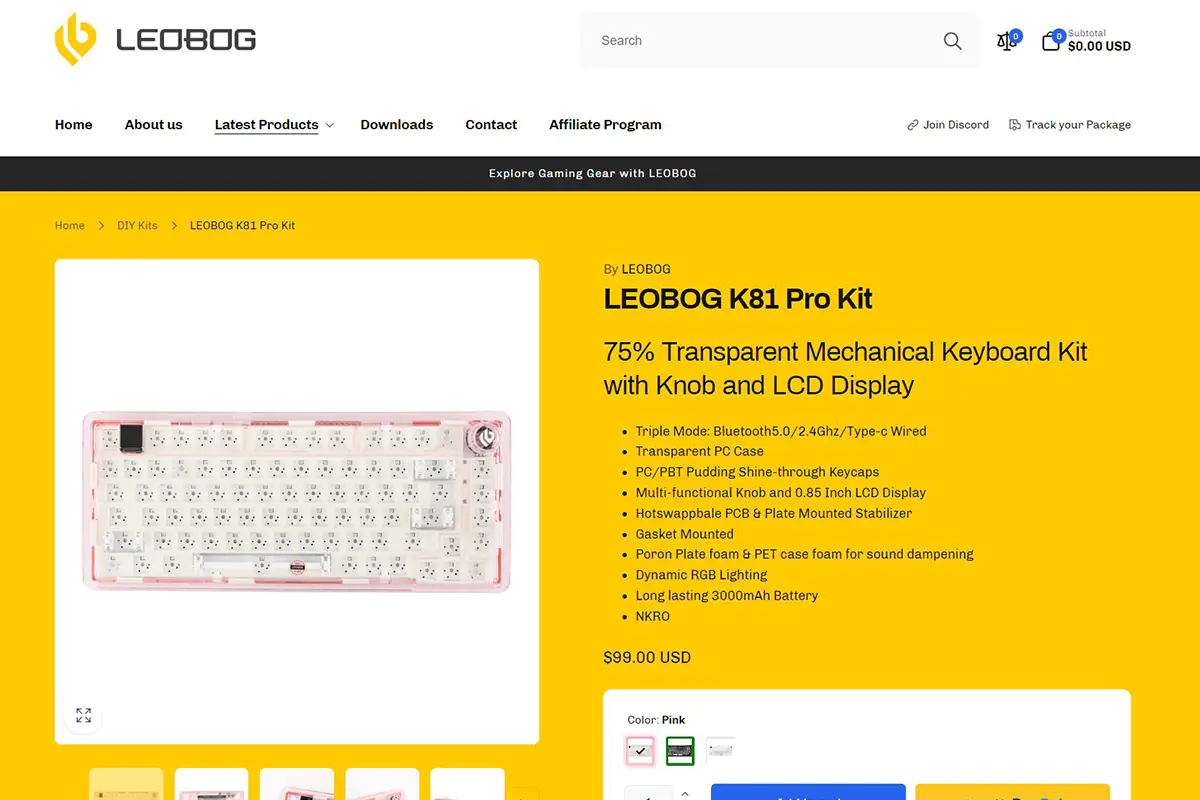
Package contents
The keyboard comes in a cardboard box with the brand’s cover design. The cover design varies depending on the model. The one I received for review is the Mint Salt variant. Its cover looks like this.
Inside the box, you will find:
- Keyboard
- Wireless RF 2.4 GHz adapter
- USB-A to USB-C cable
- 2-in-1 keycap and switch puller
- Blister dust cover
- 4 Ink Crystal Tactile Switch V3 switches
- 2 spare rubber feet for the bottom of the keyboard
- User manual
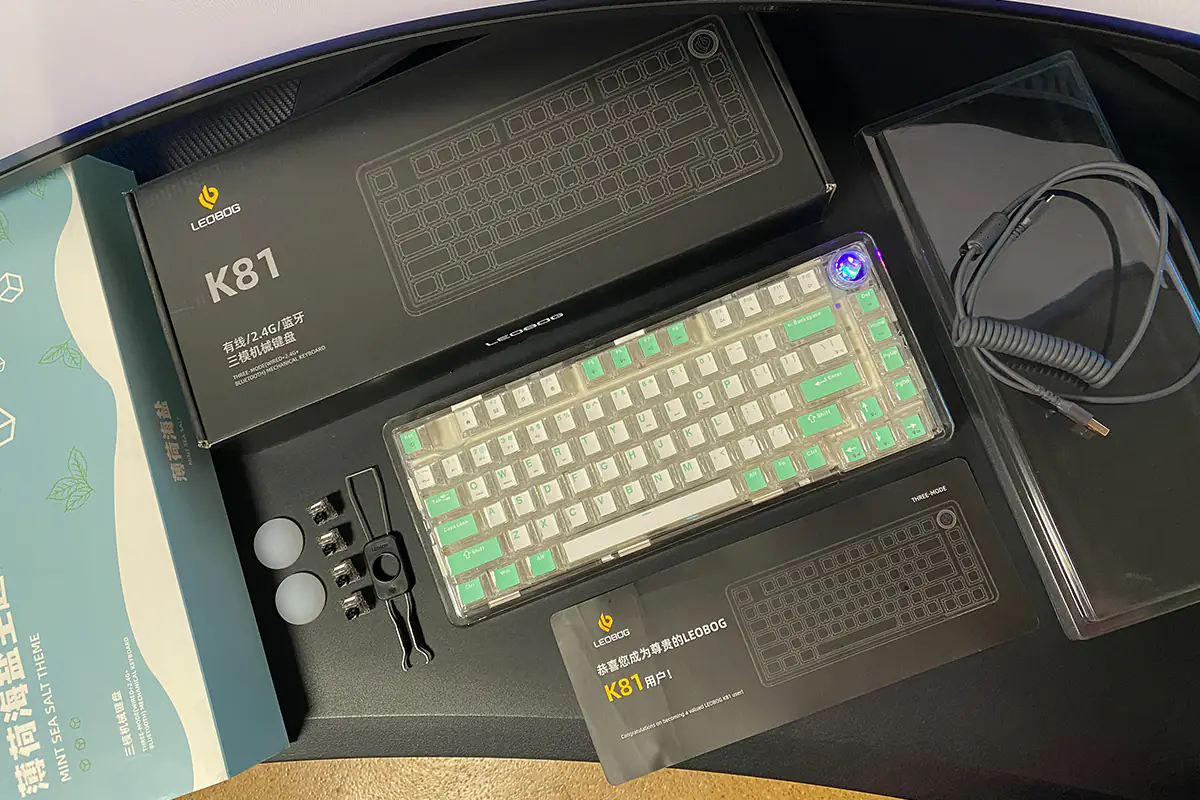
Overall, it’s a decent package. However, I have a small complaint about the puller and the detachable USB cable. The issue with the puller is that it’s short. Sure, you can use it to remove keycaps, but it’s not as convenient due to its short length. In some keyboard reviews, I’ve mentioned what I consider to be the ideal puller. Just to reiterate, here’s an example of what I’m talking about (the pink one in the photo).
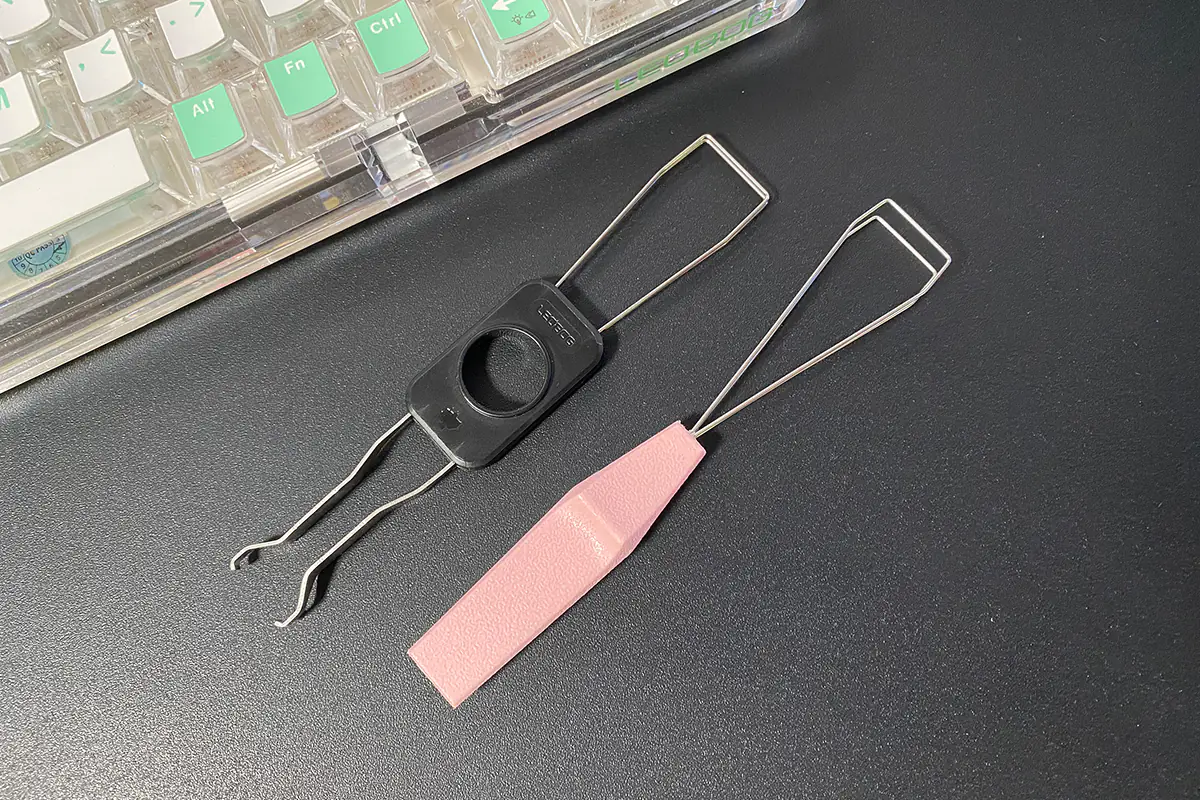
As you can see, it’s longer, which gives it a wider reach. With this kind of puller, it’s much more convenient to remove keycaps, especially the longer keys. By the way, it came with the Varmilo VA87M Sakura keyboard.
The second point is the detachable USB cable—it’s also short, only 1 meter long. This isn’t a problem if the device (PC, laptop) being connected is located close to the keyboard, for example, on the desk. Then the length is generally sufficient. But if the PC is located farther away, there may be some inconvenience with wired connection. Yes, you can use various extension cables and hubs… But the fact remains: the included cable is short, it could have been made longer. A length of 1.5 to 1.8 meters would have been quite sufficient.
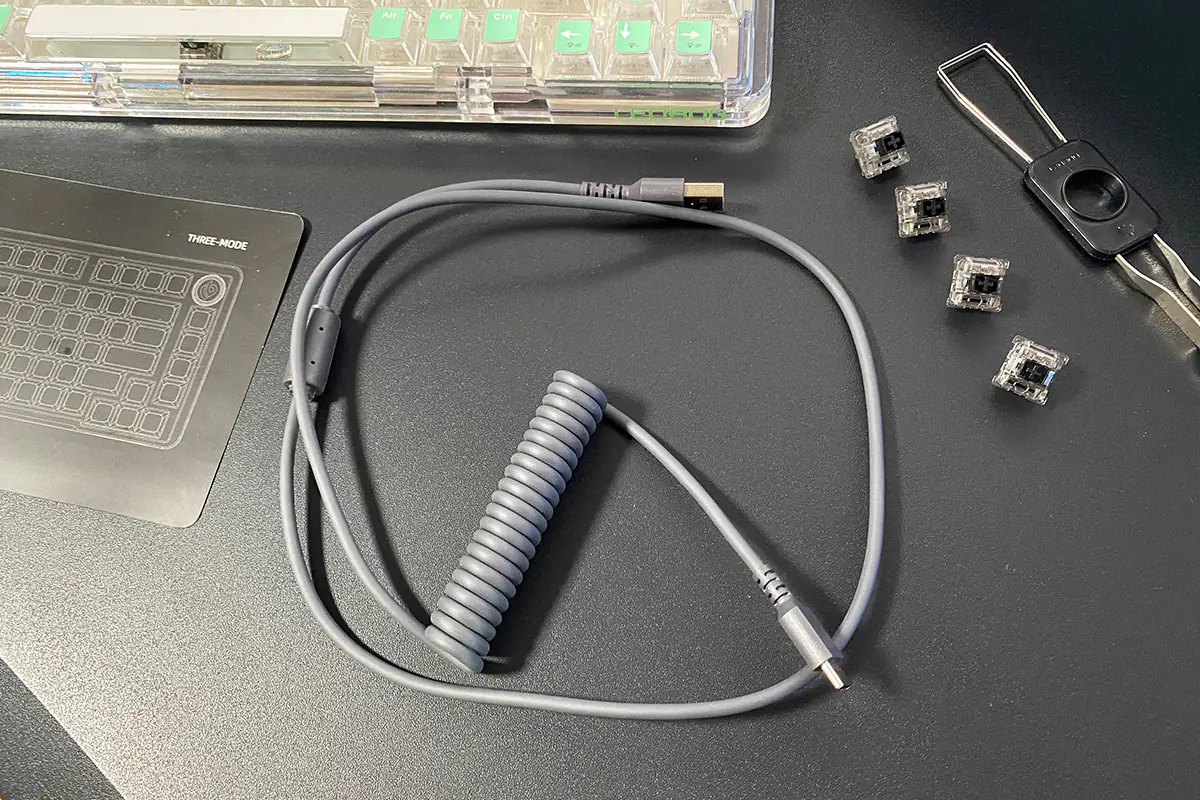
Read also:
- ASUS ROG STRIX FLARE II ANIMATE mechanical keyboard review
- ROG STRIX FLARE II mechanical gaming keyboard review
Design, ergonomics, build quality
The main feature of the LEOBOG K81 design is its transparent case and pudding keycaps. Through the transparent case, you can see some elements of the construction. For example, you can see that there are 2 layers of noise insulation in the keyboard. As I mentioned earlier, the LEOBOG K81 model is available in 4 versions: Pink Bunny, Mint Salt, Star Travel, and Morse Code.
The K81 follows a 75% keyboard layout. It is slightly shorter in length than a standard TKL. The dimensions of the keyboard are 33.5×14.2×4.5 cm. There is no numeric keypad. The PrtScn, Pause, and ScrlLock keys are absent, and their function is performed by the combination of Fn + U, I, O keys. The Del, Home, PgUp, and PgDn keys are placed in a single row. The arrow keys are slightly shifted to save space. The layout is standard ANSI: long shifts, single-row Enter key, extended backslash. The right shift key is slightly shortened in length due to the shifted arrow keys.
In the top right corner, there is a scroll wheel. It can be used to adjust the volume (by scrolling) or mute the sound completely (by pressing).
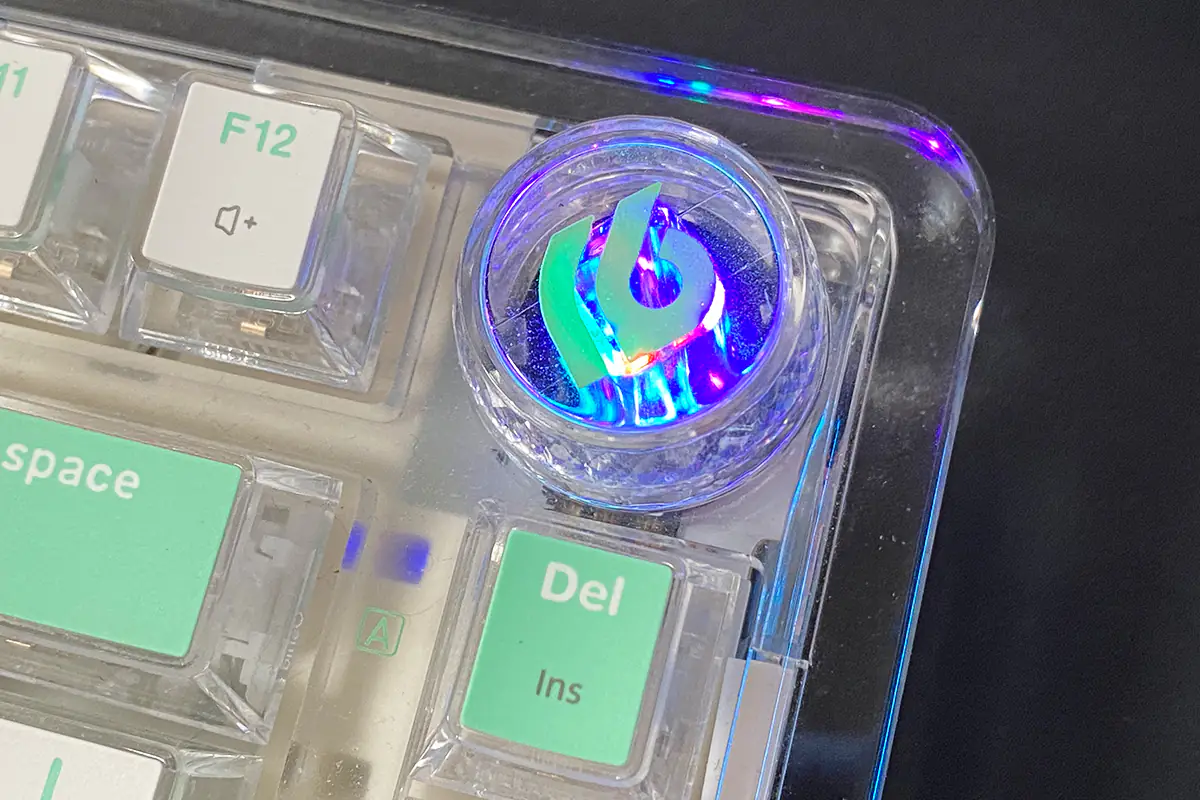 The keyboard uses transparent PC/PBT keycaps similar to pudding-style ones. They are well-made: the plastic is quite thick, and there are no burrs or imperfections at all. The method of applying legends (symbols) is quite unusual. Honestly, I’ve never seen anything like it before. At first glance, it may seem like there are stickers on top of the keys. That’s what I thought at first. But upon closer inspection, I realized that this is not the case. The top part is also plastic. It’s as if it’s glued into another part of the keycap.
The keyboard uses transparent PC/PBT keycaps similar to pudding-style ones. They are well-made: the plastic is quite thick, and there are no burrs or imperfections at all. The method of applying legends (symbols) is quite unusual. Honestly, I’ve never seen anything like it before. At first glance, it may seem like there are stickers on top of the keys. That’s what I thought at first. But upon closer inspection, I realized that this is not the case. The top part is also plastic. It’s as if it’s glued into another part of the keycap.
This solution has one significant downside. First, the symbols are not illuminated by the keyboard backlight. Without additional lighting (at night, for example), they are not visible at all. And aesthetically, to be honest, it doesn’t look very good. It looks like someone simply glued pieces of paper on top. So, my conclusion is that the keycaps definitely need to be replaced. Regular pudding or just white PBT keycaps will look great on the K81. By the way, changing the keycaps can also solve the issue with additional languages. Native keycaps come only with English letters. As for whether engraving additional symbols on keycaps of this type is possible, it’s hard for me to say.
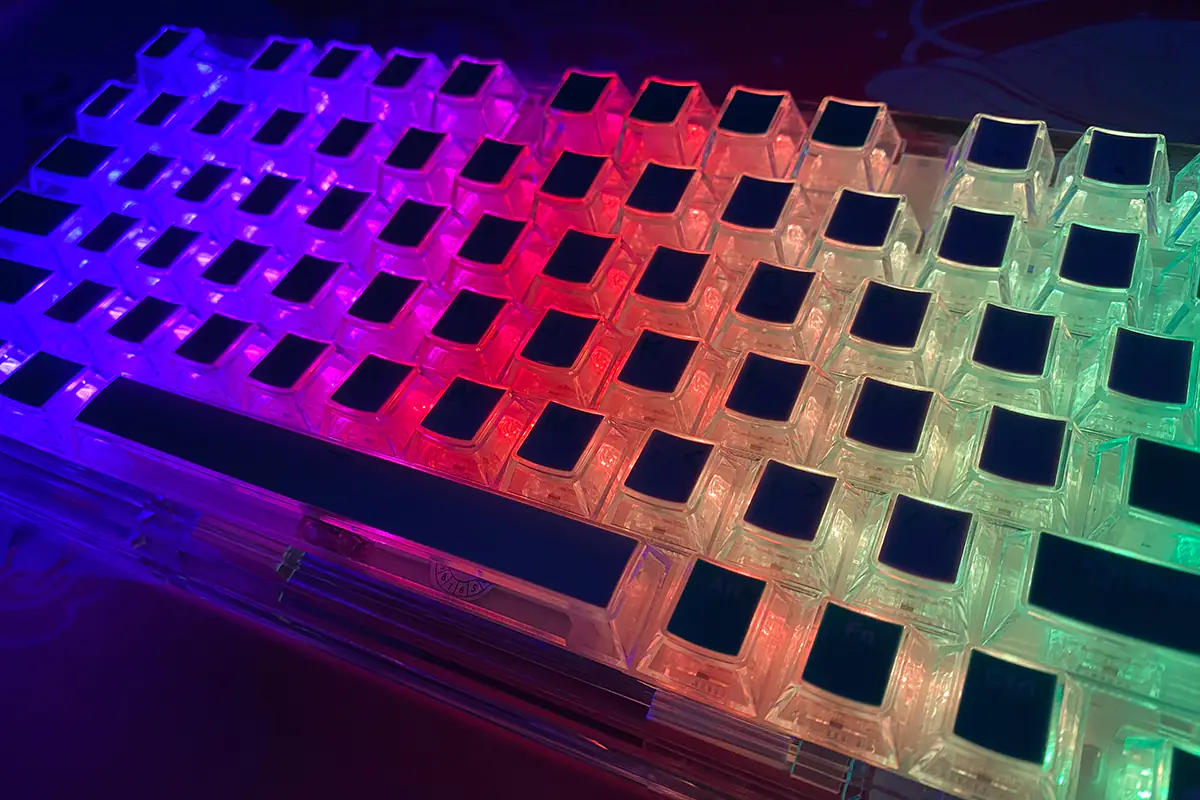 Looking at the keyboard from the side profile, through the transparent casing, you can observe its construction. First, there’s the outer thick casing. Beneath it, we see the plate where the switches are located. Behind it, there’s a quite thick noise-dampening pad. Beneath the pad lies the main keyboard PCB. And behind that, there’s another layer of noise-dampening material.
Looking at the keyboard from the side profile, through the transparent casing, you can observe its construction. First, there’s the outer thick casing. Beneath it, we see the plate where the switches are located. Behind it, there’s a quite thick noise-dampening pad. Beneath the pad lies the main keyboard PCB. And behind that, there’s another layer of noise-dampening material.
The keyboard itself is quite thick and tall. The angle of inclination does not change because there are no feet at the bottom. From my own experience, I can say that it’s comfortable to use, both for typing and gaming. However, for those who find it uncomfortable, you can always purchase a wrist rest on AliExpress. It’s a pity, of course, that LEOBOG doesn’t offer its own branded wrist rests.
At the bottom of the keyboard, we see four rubber pads for better stability. By the way, the package also includes two spare large ones. There’s a large metal plate with some technical specifications and the inscription “75% THREE-MODE KEYBOARD,” indicating the keyboard’s format and connection options.
On the top surface of the keyboard, there is a USB-C port and a connection mode switch (Bluetooth, USB, RF 2.4 GHz). You can also notice a small groove where the 2.4 GHz wireless adapter was located.
The build quality of the LEOBOG K81 is excellent. The entire construction feels solid and sturdy. Using the keyboard is not only convenient but also very pleasant. Typing, tactile feedback, and acoustic characteristics are all top-notch. As for contentious points, I can only mention the standard keycaps. You may have noticed that I haven’t said a word about the switches and stabilizers. That’s correct; I want to pay special attention to them in the respective section of the review. In the meantime, let me provide some more detail about the backlighting.
Backlighting
The LEOBOG K81 features full RGB backlighting. Combined with the transparent housing and keycaps, it looks quite unique.
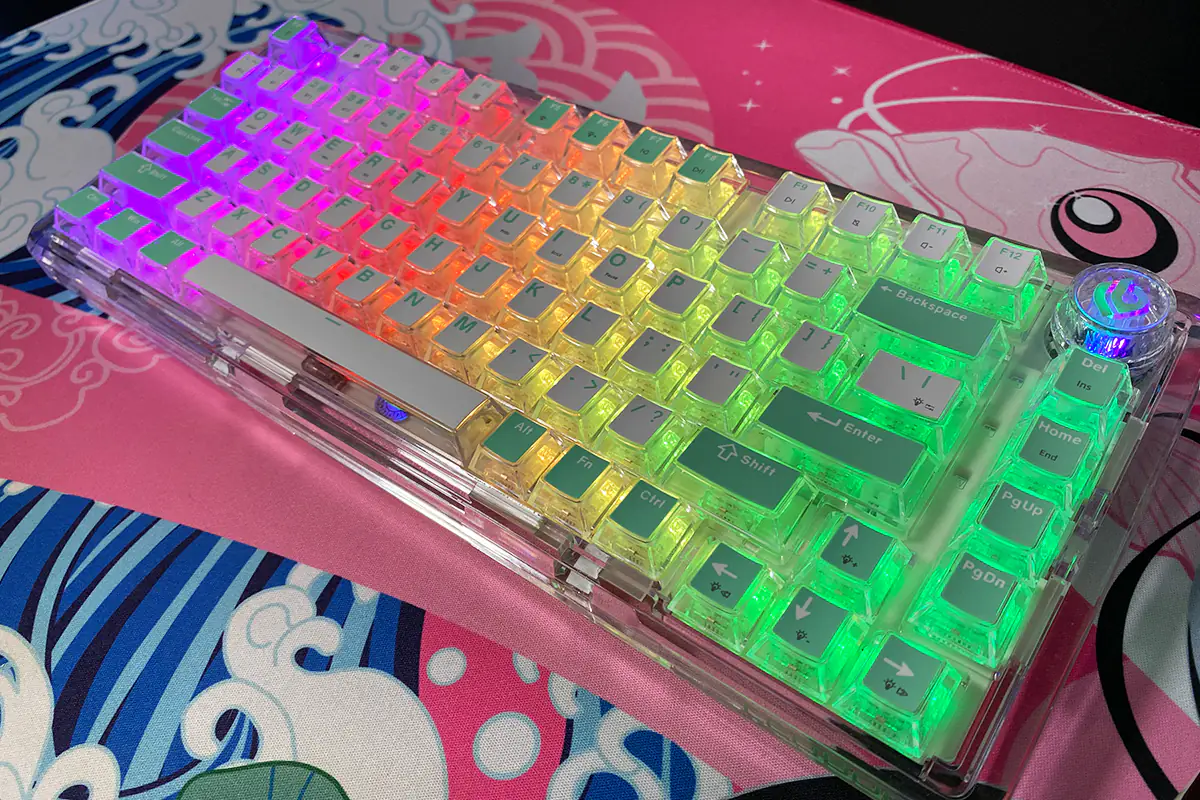 You can control the backlighting using a combination of keys on the keyboard itself or through the proprietary application. Using the Fn + arrow keys combination, you can switch between effects, adjust brightness, animation speed, or turn off the backlighting completely. Brightness can also be adjusted using the Fn + F5, F6 combination. Fn + TAB allows you to change the color within the current effect.
You can control the backlighting using a combination of keys on the keyboard itself or through the proprietary application. Using the Fn + arrow keys combination, you can switch between effects, adjust brightness, animation speed, or turn off the backlighting completely. Brightness can also be adjusted using the Fn + F5, F6 combination. Fn + TAB allows you to change the color within the current effect.
In the proprietary application, you can make more flexible backlighting adjustments. For example, you can customize colors within a ready-made effect or assign each key its own individual color.
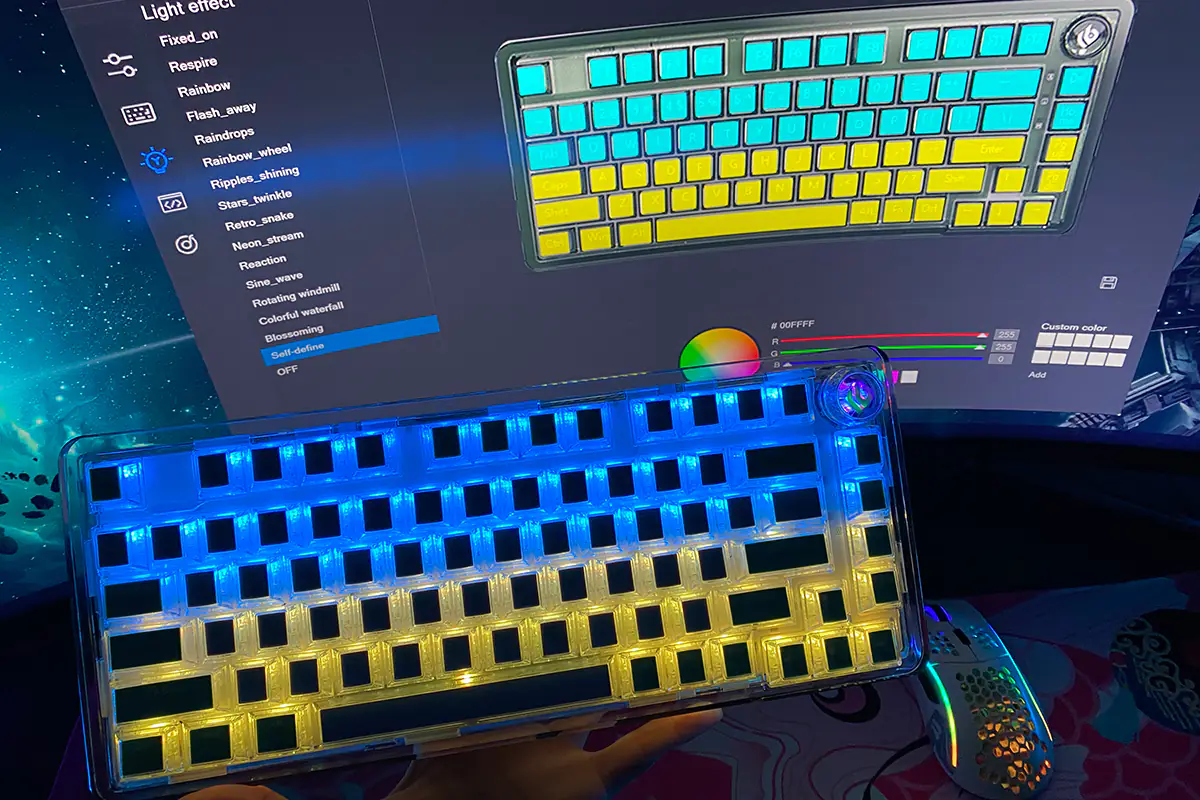 There are a total of 16 backlighting modes available. In the video below, I will demonstrate how it all works and looks in reality.
There are a total of 16 backlighting modes available. In the video below, I will demonstrate how it all works and looks in reality.

The backlighting is quite decent, but personally, it seemed to me that in some places it lacks saturation. This is because the LEDs in the keyboard are small and are hidden deep under the switches.
I already mentioned that the symbols on the keycaps are not illuminated, making them invisible at night even with the keyboard backlight on. However, this issue is not with the backlight but with the keycaps themselves. Additionally, I’ll note that the backlight noticeably drains the keyboard’s battery faster, even with the sleep mode enabled. I’ll provide more details on this when discussing the battery life.
Connections and supported platforms
The LEOBOG K81 can operate both in wired and wireless modes. In wired mode, the keyboard connects using a standard USB-A to USB-C cable. Wireless connection is achieved via Bluetooth or the RF 2.4 GHz radio module. With Bluetooth, the keyboard can be paired with up to 3 different devices simultaneously, and you can switch between them on the fly using the Fn + 1, 2, 3 key combinations. By the way, there are no delays or latency issues when connected via Bluetooth or RF 2.4. Therefore, this keyboard is suitable not only for office work in wireless mode but also for dynamic gaming.
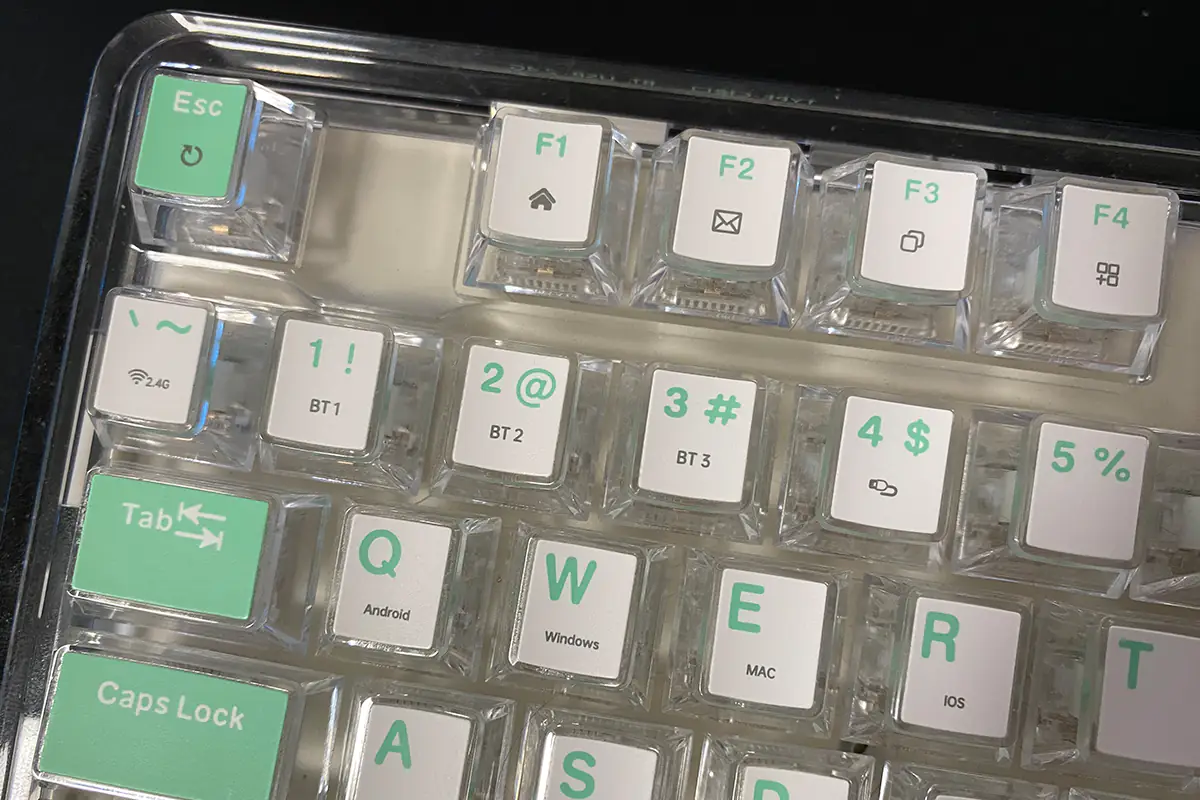
Another standout feature of the LEOBOG K81 is its support for all modern platforms: Windows, Android, macOS, and iOS. You can also switch between them using the Fn + Q, W, E, R key combinations.
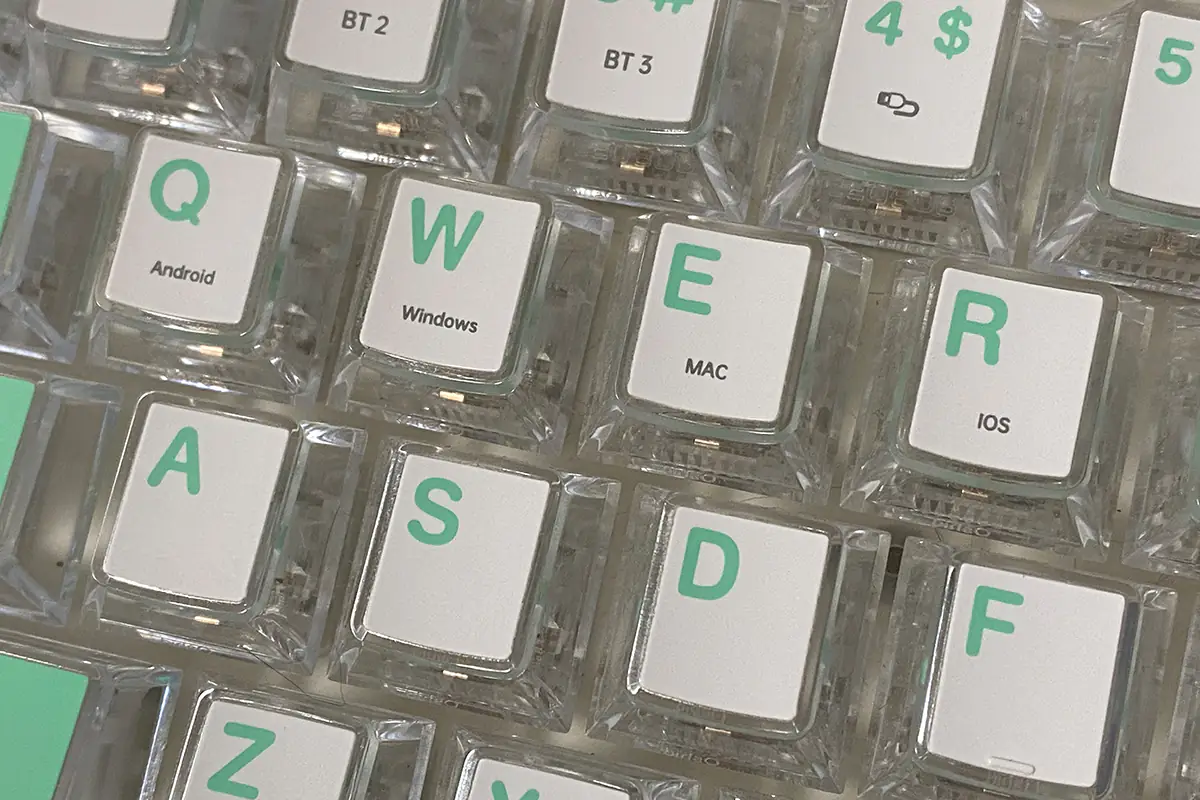
Read also:
Switches, stabilizers, timing
The LEOBOG K81 model comes equipped with two types of switches: Ice Crystal Linear Switch and Ice Soul Tactile Switch. Here are the specifications of the switches:
Ice Crystal Linear Switch:
- type: linear
- working force of pressing: 35±3 gs
- full pressing force: 48±3 gs
- stroke before actuation: 1.8±0.3 mm
- full key travel: 3.7±0.3 mm
Ice Soul Tactile Switch:
- type: tactile
- working force of pressing: 30±3 gs
- full pressing force: 45±3 gs
- stroke before actuation: 1.7±0.3 mm
- full key travel: 3.6±0.3 mm
- declared resource: 60 million keystrokes
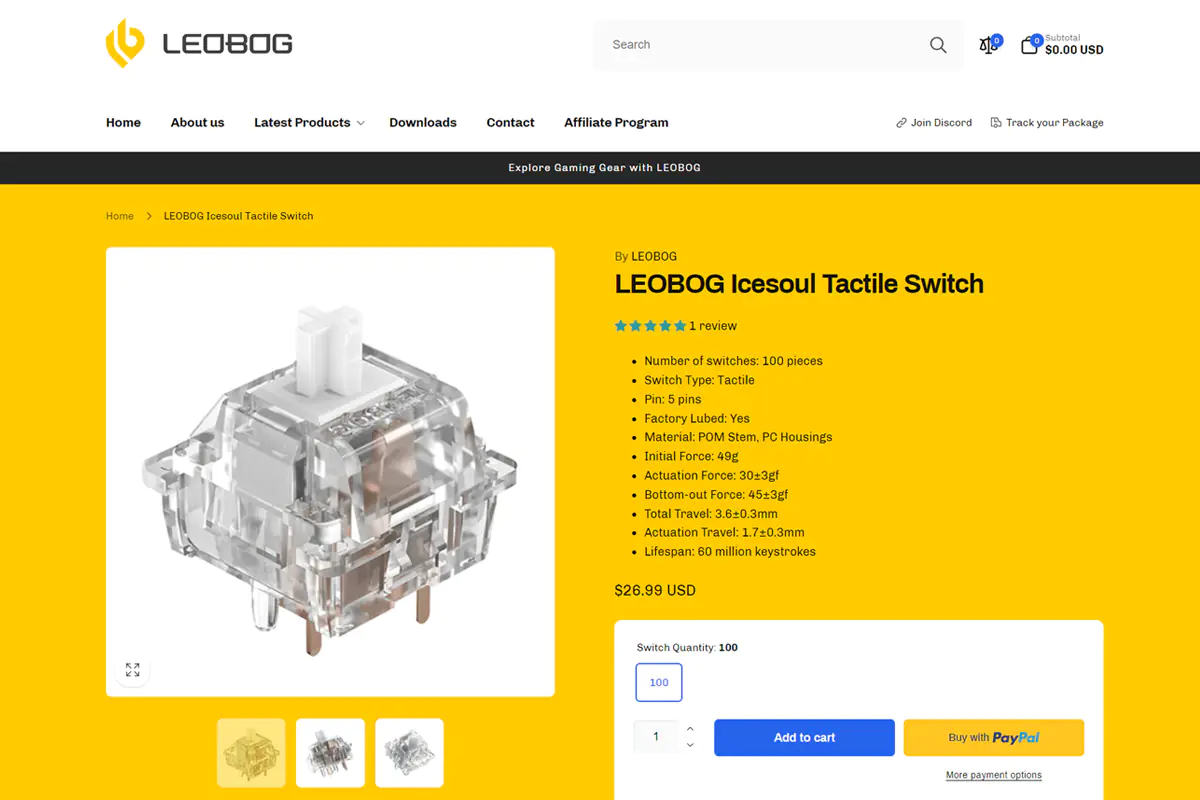
It’s difficult to determine the exact lifespan of the Ice Crystal Linear Switch since this information is not provided on the official website. However, it can be assumed to be similar to that of the Ice Soul Tactile Switch (60 million keystrokes) or close to it. All switches come pre-lubricated from the factory, which enhances the typing experience.
Among other advantages of the LEOBOG K81, hot-swappable switches stand out – the ability to quickly replace switches without soldering. This allows users to be flexible with their switch choices, trying out different options available from LEOBOG or using any other compatible 5-pin switches.
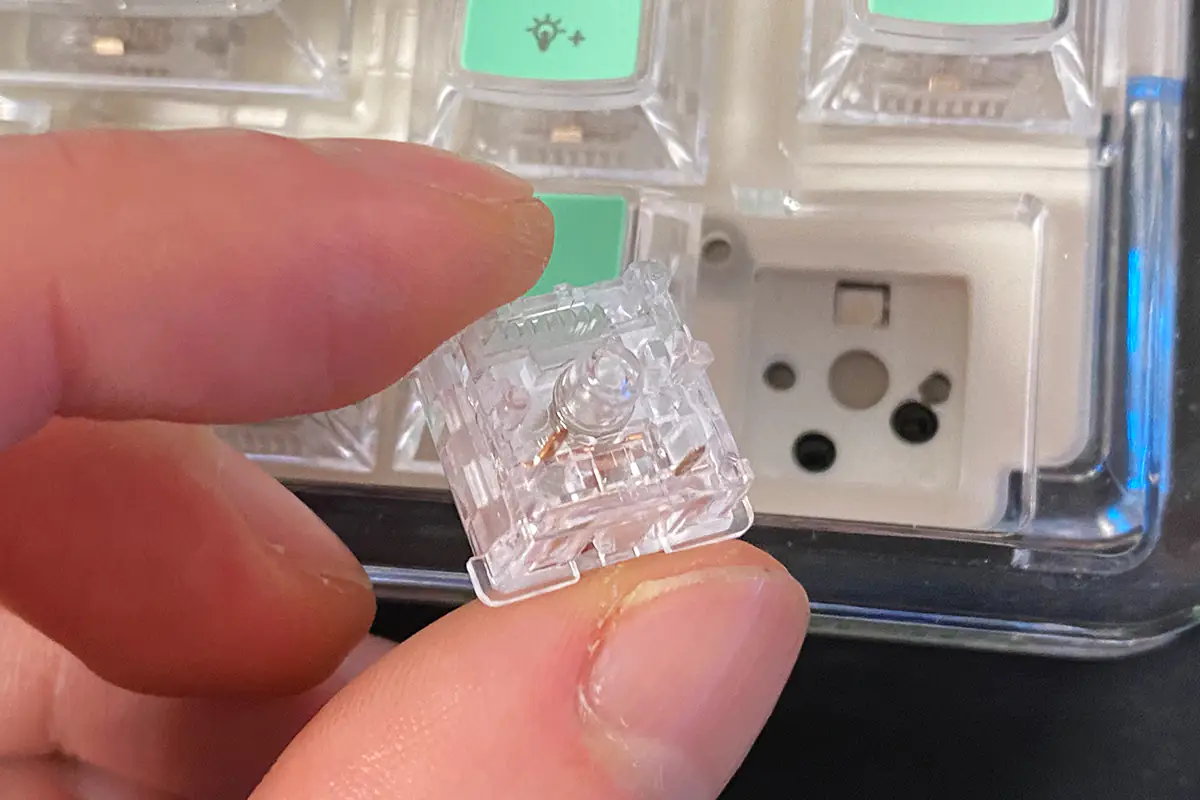
Also included with the keyboard are 4 Ink Crystal Tactile Switch V3 switches for trial. By the way, here are their specifications:
- type: tactile
- working force of pressing: 50±3 gs
- full pressing force: 64±3 gs
- stroke before actuation: 1.9±0.3 mm
- full key travel: 3.4±0.3 mm
- declared resource: 60 million keystrokes
It’s hard to say what stabilizers are used in the keyboard since there is no official information about them. However, I can say for sure that they are also pre-lubricated and overall perform excellently.
Now, a few words about typing and tactile feedback from the keyboard overall. I’ll remind you that I’m reviewing the LEOBOG K81 Mint Salt version with Ice Crystal Linear Switches. Individual keys are pressed softly, and the sound from pressing is quiet. I can confidently say that this mechanism is excellent for late-night gaming sessions if there’s someone else in the room besides you. Long keys feel about the same as individual ones. Typing is soft, quiet, without the characteristic clacking or spring noise typical of inferior mechanical keyboards. Additionally, the stabilization of the long keys is well felt; they don’t wobble and sit excellently.
For example, I recorded a video with taping. I should note right away that I didn’t have a high-quality microphone at hand, so I recorded the video on my smartphone. When recording video, the iPhone’s microphone slightly amplifies the sound, which is why the typing sound may seem a little louder than it actually is. The point is that the keyboard sounds quieter in real life than in the video.

Regarding the Ink Crystal Tactile Switch V3 switches that come in a set of 4 – they are more tactile. The keystrokes are still quiet, but there is a greater sense of resistance.
The LEOBOG K81 app
For more advanced customization, there is their proprietary software called LEOBOG K81, just like the keyboard model. The proprietary software is quite interesting. Strangely, it’s not available on the official website; there’s no mention of it whatsoever. The “Downloads” section is completely empty. I only found out about the existence of this software accidentally while watching a short review of the keyboard by some foreign YouTuber. I managed to find and download this application from a third-party website. As one might guess, there is only a version for Windows.
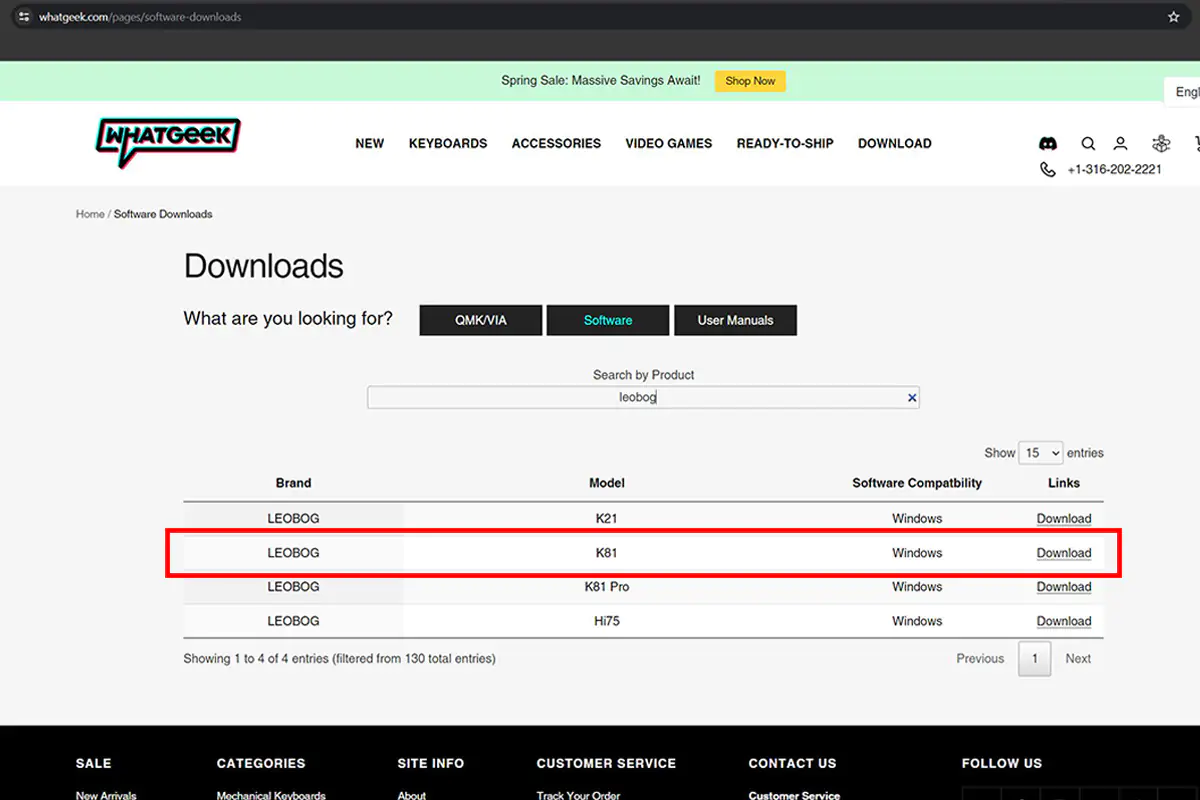
The application itself is rather mediocre. At times, it’s not very intuitive, and the design, frankly speaking, leaves much to be desired. However, after spending some time exploring it, you get used to it, and it becomes more or less clear what is where and what it does. Let’s take a closer look at it.
Upon launching the application, we are greeted with the “Key assignment” menu. Here, you can create profiles for the keyboard and remap keys.
In the “Light effect” menu, you can customize the lighting. There are 16 predefined lighting effects available, which can be further adjusted to your liking.
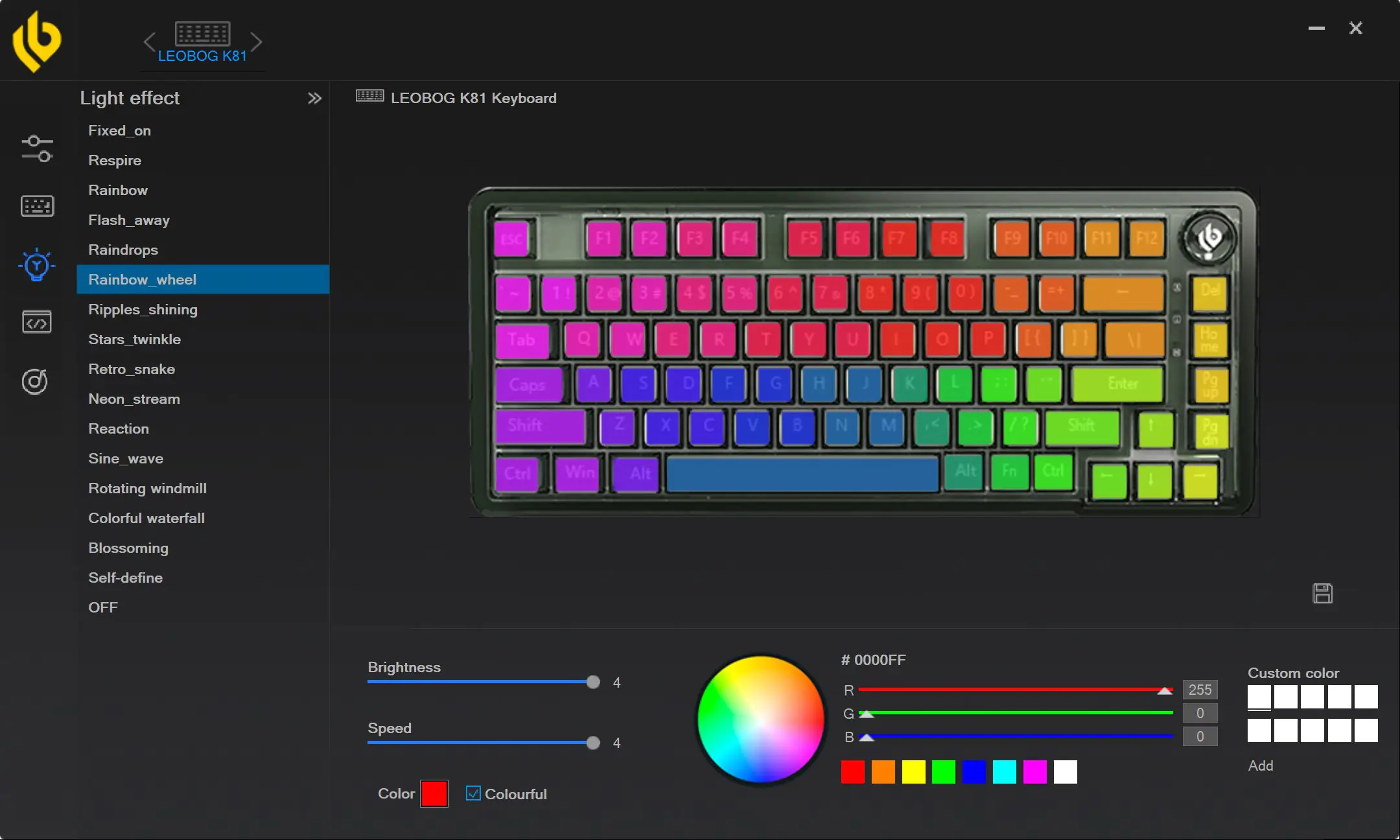 In the “Macro edit panel” menu, you can create and edit macros. The execution of macros can be assigned to buttons in the “Key assignment” menu.
In the “Macro edit panel” menu, you can create and edit macros. The execution of macros can be assigned to buttons in the “Key assignment” menu.
In the “Effect” menu, you can enable and adjust the keyboard’s synchronization with the sound playing on your PC. In simple terms, you play music on your PC, and the keyboard starts lighting up in rhythm. There are 10 predefined effects to choose from. However, none of this seems to work. I’ve tried various effects, played music in the browser and the system player, but the keyboard doesn’t respond at all.
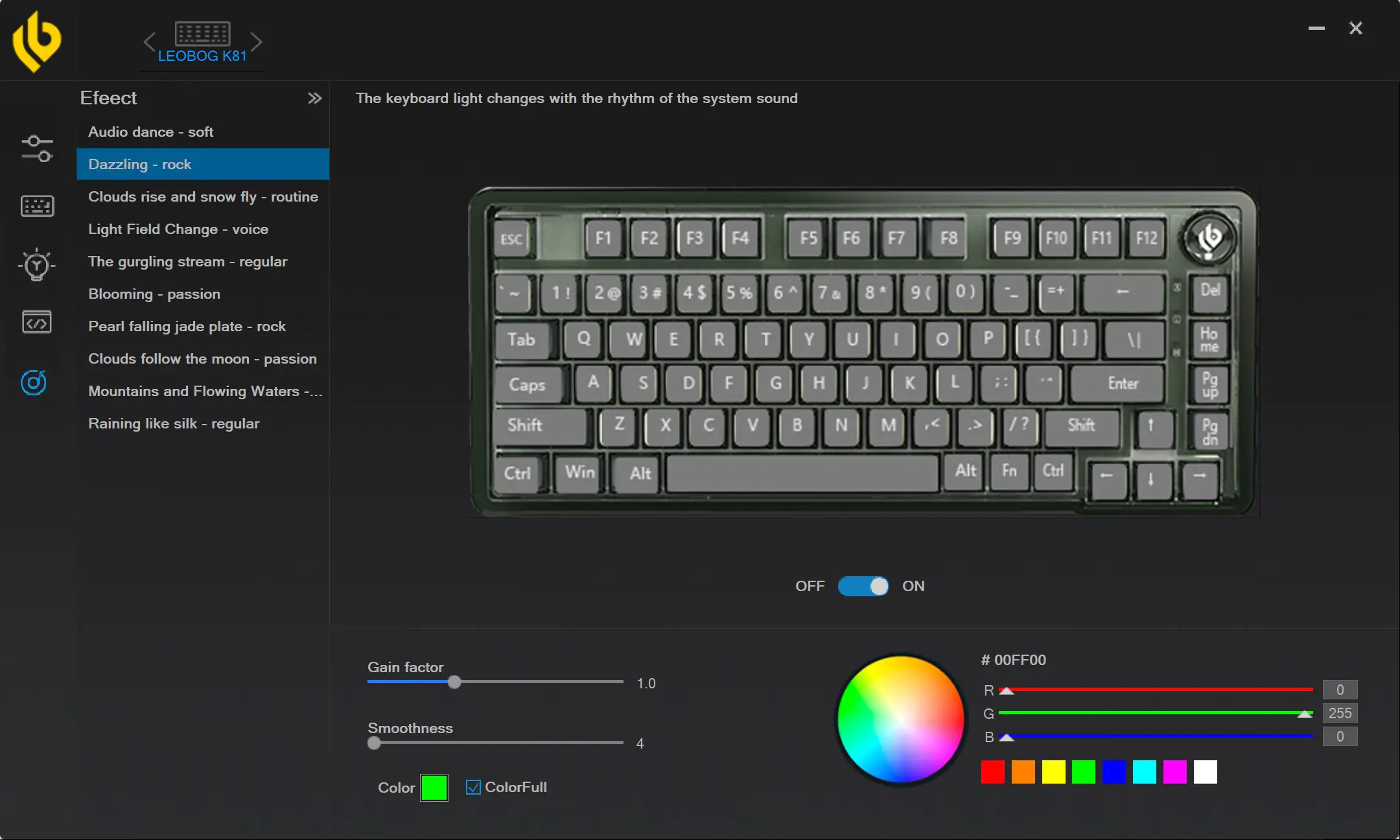 The Global menu contains the main settings of the device and the application itself.
The Global menu contains the main settings of the device and the application itself.
Among the particularly useful settings, the sleep mode stands out. To save battery in wireless mode, the keyboard enters sleep mode after a certain period of inactivity. The backlighting is also turned off in sleep mode. The minimum idle time before entering sleep mode is 30 seconds, and the maximum is 20 minutes. Additionally, if needed, you can disable this option altogether.
Exiting sleep mode on the keyboard is instantaneous with the press of any key or the scroll wheel. However, scrolling the wheel from sleep mode does not wake it up. This can be quite inconvenient when you’re simply listening to music on your PC and want to adjust the volume. You have to press any key first and then adjust the volume. Other than that, there are no issues; everything works as expected.
Another plus is that all settings made in the application are saved at the keyboard’s firmware level. This means that you can configure the keyboard once in the application and use it with those settings on other devices without needing to install the proprietary software there.
One drawback is the lack of any information about the remaining battery percentage. It’s not displayed on the keyboard itself for understandable reasons. However, it could have been added to the application. Interestingly, in the custom LEOBOG K81 PRO version, there is a small display on the body that shows the battery percentage.
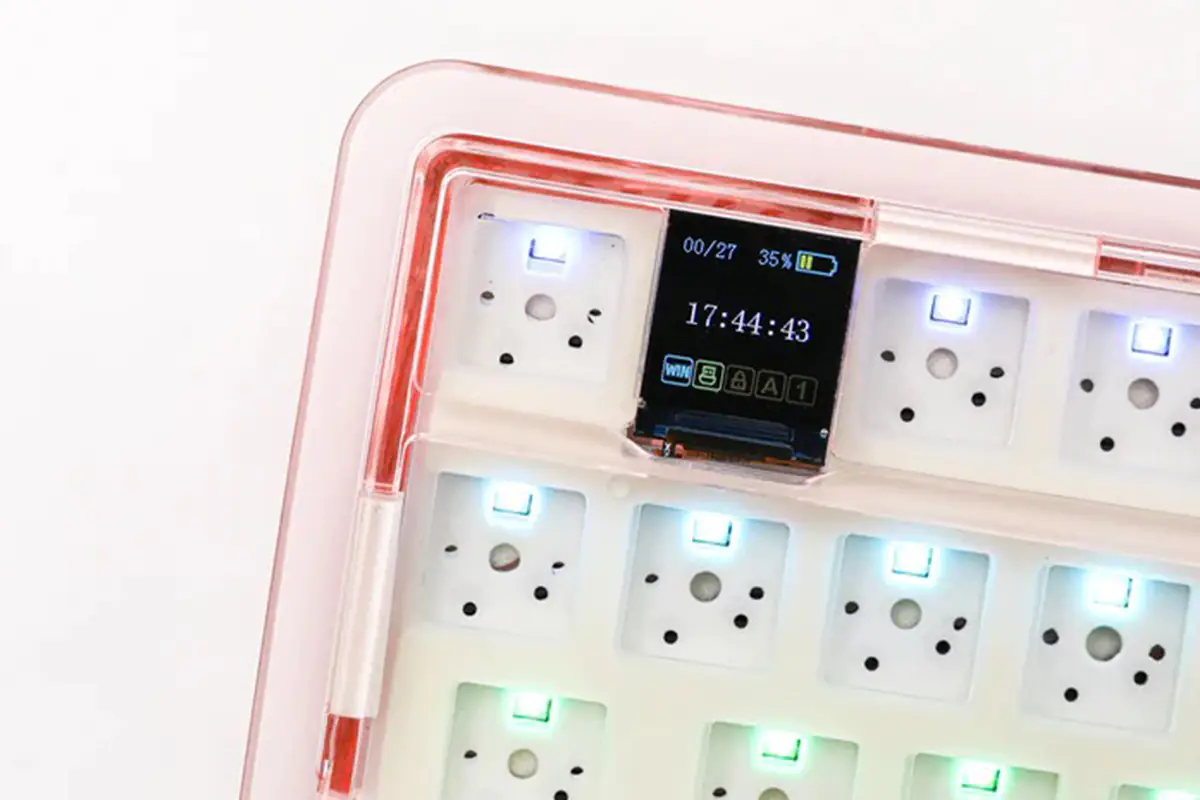
Battery life
The LEOBOG K81 comes with a 3000 mAh battery and charges via standard USB. With the backlight at maximum brightness in wireless mode (RF 2.4), I got 32 hours of usage on a full charge. During this time, the sleep mode was set to 3 minutes, meaning normal keyboard usage on a PC. So, the keyboard didn’t work continuously for all 32 hours but occasionally entered sleep mode..
With the backlight turned off, the battery life increases significantly. Without the backlight and with sleep mode enabled (3 minutes), a full charge can last for a week (5-7 days, depending on usage intensity).
As mentioned earlier, there’s no way to check the remaining battery percentage. To find out if the keyboard is low on charge and will soon shut down, you can rely on the Fn key indicator: it starts flashing red. During charging, this key will remain solid red. When the keyboard is fully charged, the key stops flashing red. Essentially, that’s all the indication and information about the battery charge available in the K81.
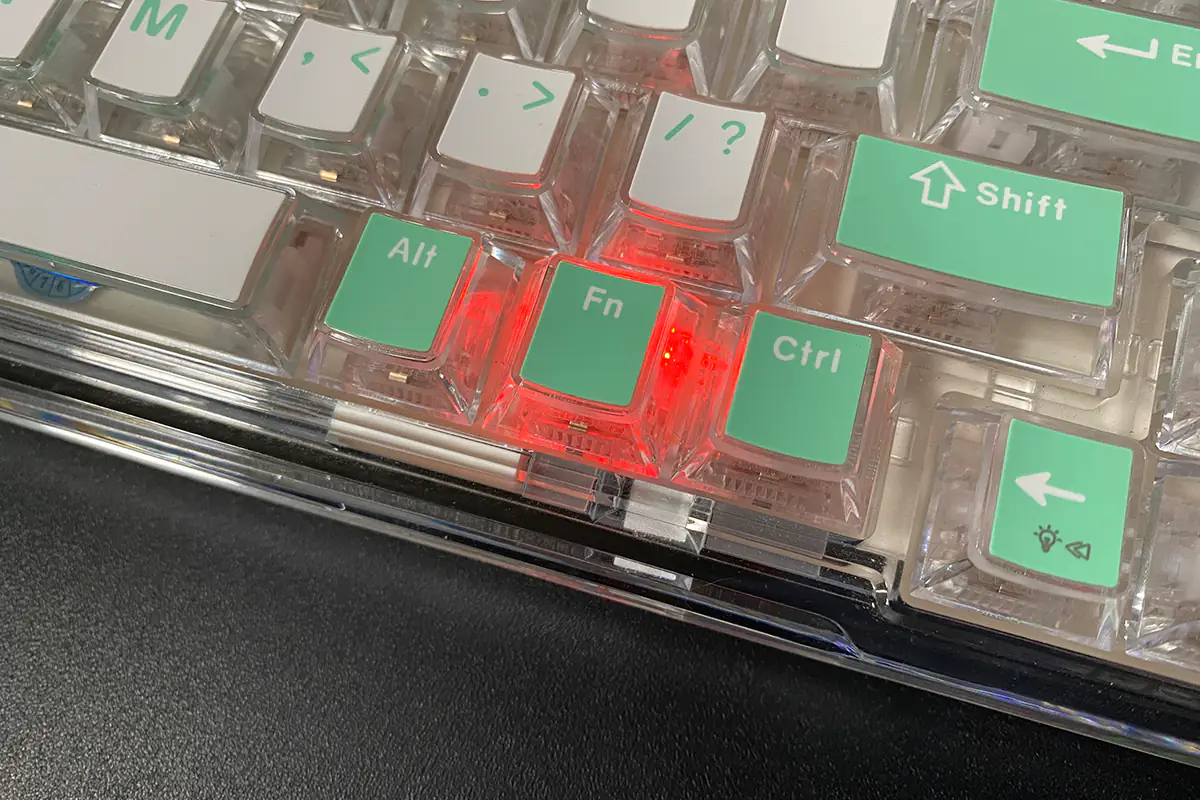
Conclusions
Summing up, it can be said that the LEOBOG K81 is an excellent keyboard not only for its price segment but overall. Among its main advantages are: quality construction; wireless connectivity; simultaneous support for multiple Bluetooth devices; compatibility with Android, MAC, and iOS; good switches and stabilizers; pre-lubrication; hot-swappable switches; thoughtful noise isolation; and pleasant typing experience. Especially noteworthy is the typing experience: typing and gaming on the K81 is a pleasure. Additionally, the keyboard boasts good battery life, but only without the backlighting turned on. And of course, the affordable price is one of the key advantages of this keyboard. The device costs only $119, and with careful searching on platforms like AliExpress, it can be found even cheaper.
Among the contentious points, I can only highlight the lighting, included keycaps, and design. Overall, the lighting is decent, but it lacks a bit, particularly in brightness and saturation. Also, it significantly drains the battery, as it turns out. As for the keycaps, they’re not terrible, but they’re… specific. On one hand, they complement the overall design of the keyboard well. However, in practice, the non-transparent symbols spoil the experience and look as if stickers were placed on top of the keys, as mentioned before. The design of the keyboard is also distinctive. It certainly has a unique flair, but I believe its unusualness might not appeal to everyone, hence why I singled it out as a contentious point. As for the proprietary software, I don’t see much point in it. It’s appreciable that it exists at all, but overall, the software turned out to be not so bad.
Conclusion: the keyboard is excellent, it’s worth considering. I would personally get the K81, swap out the keycaps, and happily use it. Alternatively, I might consider the custom base on its basis, the K81 PRO KIT.
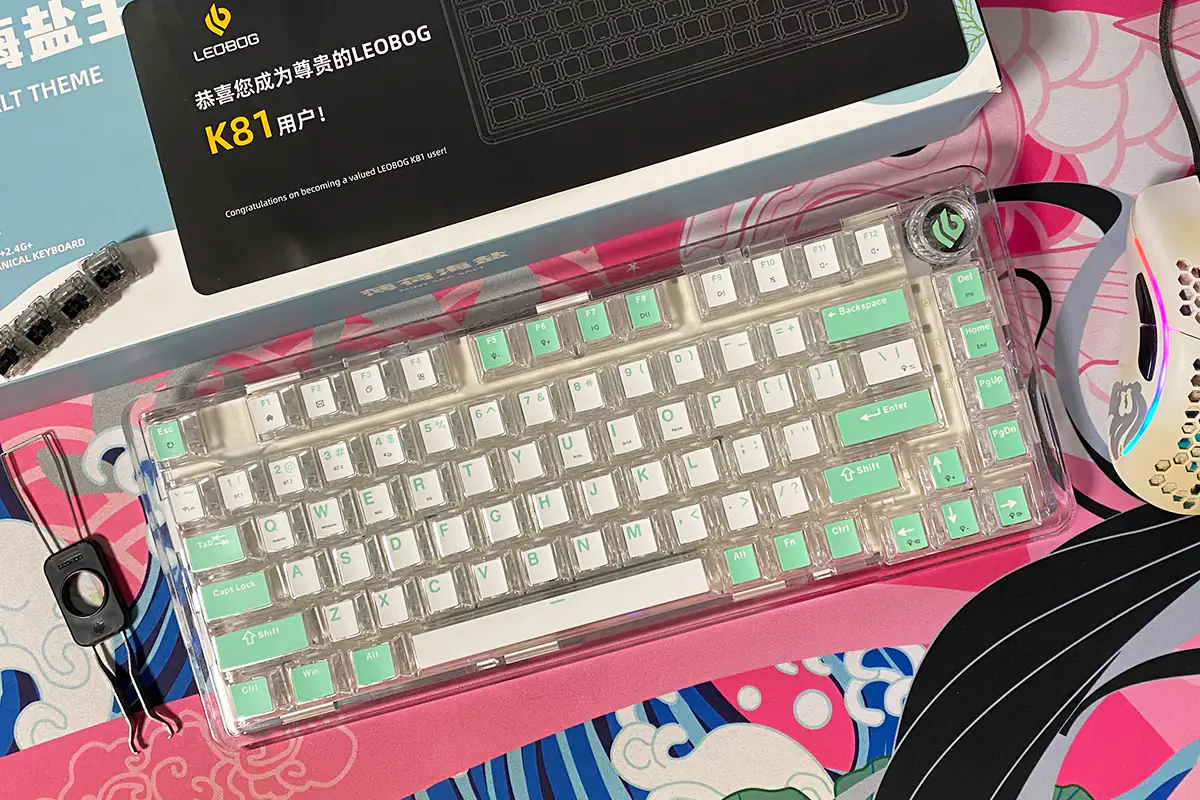
Read alsо:
- ASUS ROG Falchion Ace Review: ultra-compact gaming keyboard
- ASUS ROG Azoth Wireless Gamer Keyboard Review: Towards Customisation
- The Ultimate Mac Keyboard Showdown: 5 Boards That Will Change How You Type Forever


